Not to be confused with Land Precision Strike, Mounted Close Combat Overwatch (MCCO) is a British Army requirement defined as for…
A long-range system providing anti-armour coverage to the battle group, with concepts carrying multiple missiles weighing up to 50 kg with a range of up to 10 km or more
Mounted Close Combat Overwatch (MCCO) is part of the wider Battle Group Organic Anti-Armour (BGOAA) programme that also includes.
- Close in Self Defence (CISD), portable lightweight munitions carried by the Infantry section (a successor to NLAW and ASM)
- Close Combat Anti-Armour Weapon-Dismounted (CCAAW-DM), capable of destroying armoured vehicles even if hidden from view (A successor to Javelin)
- Close Combat Anti-Armour Weapon-Mounted (CCAAW-M), capable of destroying armoured vehicles even if hidden from view (A successor to Javelin)
In the publicity materials that accompanied the May 2021 concept launch, Lieutenant Colonel Mike Baxter, SO1 Light and Medium Forces, commented that Swingfire, Javelin, ASM and NLAW
These systems were designed in the 90s and 00s, with early 2000s conflict in mind, typically as dismounted systems and not optimised for on-the-move operations. During the lifetime of these systems, they have not really faced a significant armour threat
Obviously, this was before the Russian invasion of Ukraine in early 2022, he went on to say
If we took Swingfire nowadays, the Swingfire missile system would, noting the detectability of the host platform, would not provide anywhere near sufficient range. This is looking at providing an organic battle group anti-armour capability with a range exceeding 10 km. “The idea is MCCO would be in a position to provide dedicated anti-armour support to any user within the battle group… to allow a dismounted force to be able to call in an MCCO-class effector.”
In the comment above, Swingfire was mentioned, certainly worth looking at its background to understand the MCCO requirements.
Before Mounted Close Combat Overwatch (MCCO) — History
Guided missile overwatch as a term goes way back to concepts that eventually informed CVR(T) in the early seventies, but the missile used, Swingfire, had an even longer heritage.
Swingfire Anti Tank Guided Missile (ATGW)
TRACER, TRIGAT, Apache, the Gulf War and Brimstone
This is where things get a little complicated.
The TRIGAT missile programme began in 1983 with the agreement of France, Germany, and the UK to establish the Euromissile Dynamics Group to develop a number of anti-tank guided weapons.
In 1983, the Government further outlined their intent
Swingfire, our long-range anti-tank missile mounted on tracked vehicles, has been provided with a thermal imaging sight and an improved warhead. A similar sight, together with an improved warhead, is currently being provided for Milan, and an improved warhead for TOW, our helicopter-borne anti-tank missile, is also now in service.
Research and development work has also started on our next generation of anti-tank missiles to replace Milan, Swingfire and TOW in the 1990s, work on which I am glad to say we are in partnership with France and Germany.
The FV438 vehicles were withdrawn in the mid-eighties, but Swingfire and Striker remained.
There was some talk of putting a TOW launcher on a Spartan, but this did not progress beyond a single concept image
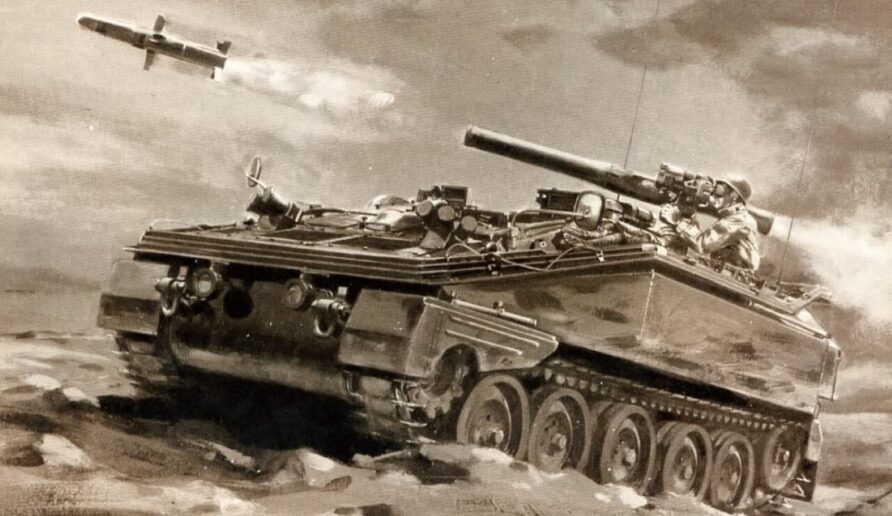
In 1988, the UK, France and Germany signed a Memorandum of Understanding (MoU) to cooperate on the joint development of an anti-tank missile family (medium and long-range) that would replace Milan, HOT and Swingfire; Euromissile was intended to be the industrial vehicle.
The missiles were to be called TRIGAT- MR and TRIGAT-LR and both would utilise a tandem shaped-charge warhead and either a laser beam riding or IR homing guidance. The LR variant was intended to have a range exceeding 5,000m and employ a terminal dive attack profile to target thinner top armour of armoured vehicles.
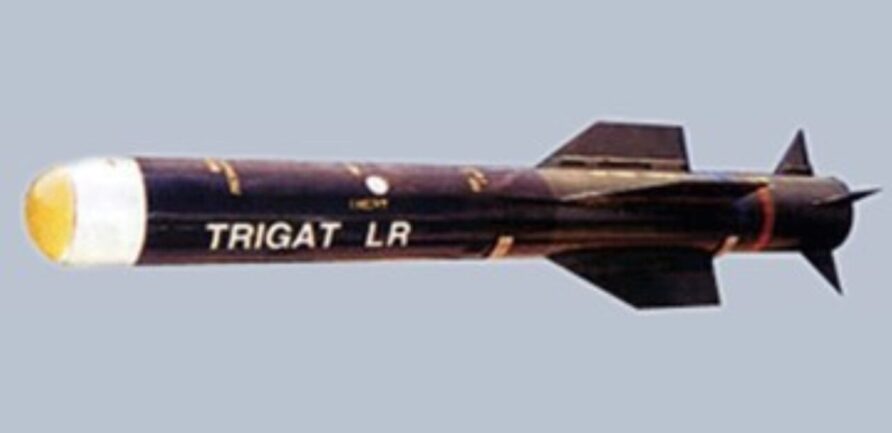
TRIGAT-LR would also be used as a helicopter-launched weapon, at the time, envisaged to be the Joint European Helicopter Tonal or Light Attack Helicopter (LAH).
We expect to mount a variant of TRIGAT on the light attack helicopter, on which we hope shortly to sign an agreement to proceed with project definition based on the Al29 helicopter, with the Italians, Dutch and Spanish.
The intent was that TRIGAT-MR would replace the British Army Milan ATGW, and TRIGAT-LR would replace both the TOW and Swingfire missiles on Lynx and Strike/FV438 respectively.
Whilst many know that the Germans proposed various combinations of elevating masts with HOT, Milan and TRIGAT missiles on Marder, Leopard 1 and truck base vehicles, less well known is that the British Army also considered the concept. Some of the studies that were looking at TRIGAT-LR as a replacement for Swingfire considered using the Challenger 1 Main Battle Tank.
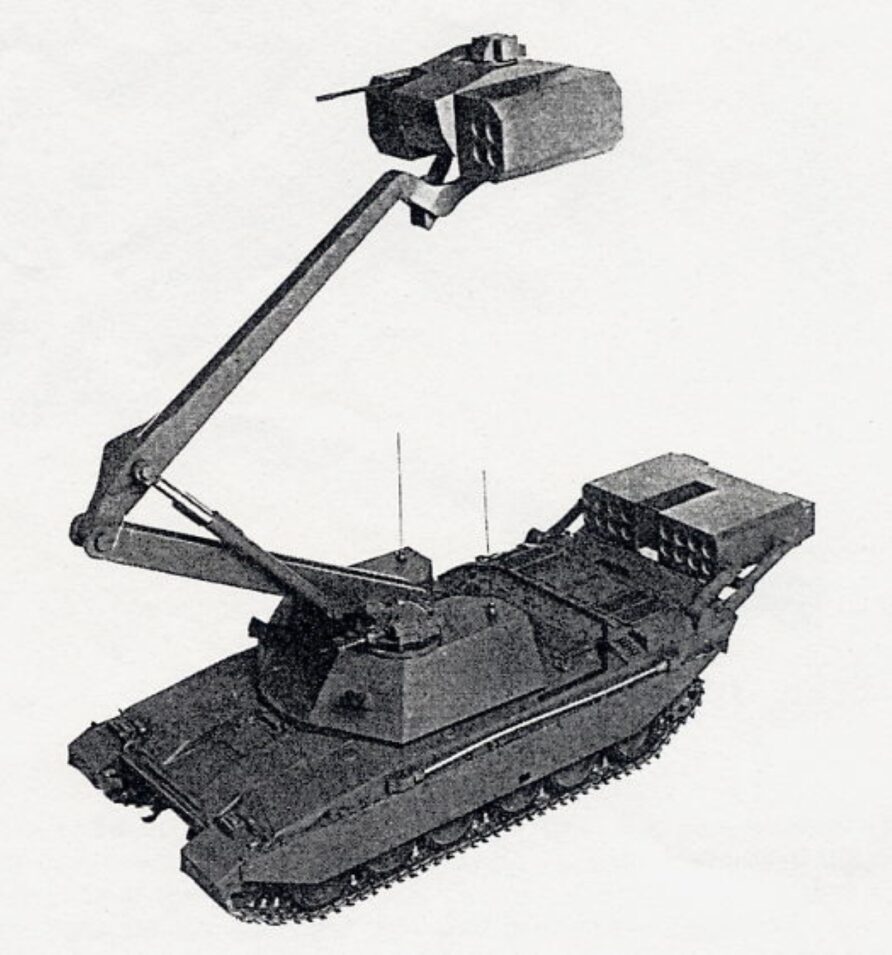
A version of Warrior was also proposed.
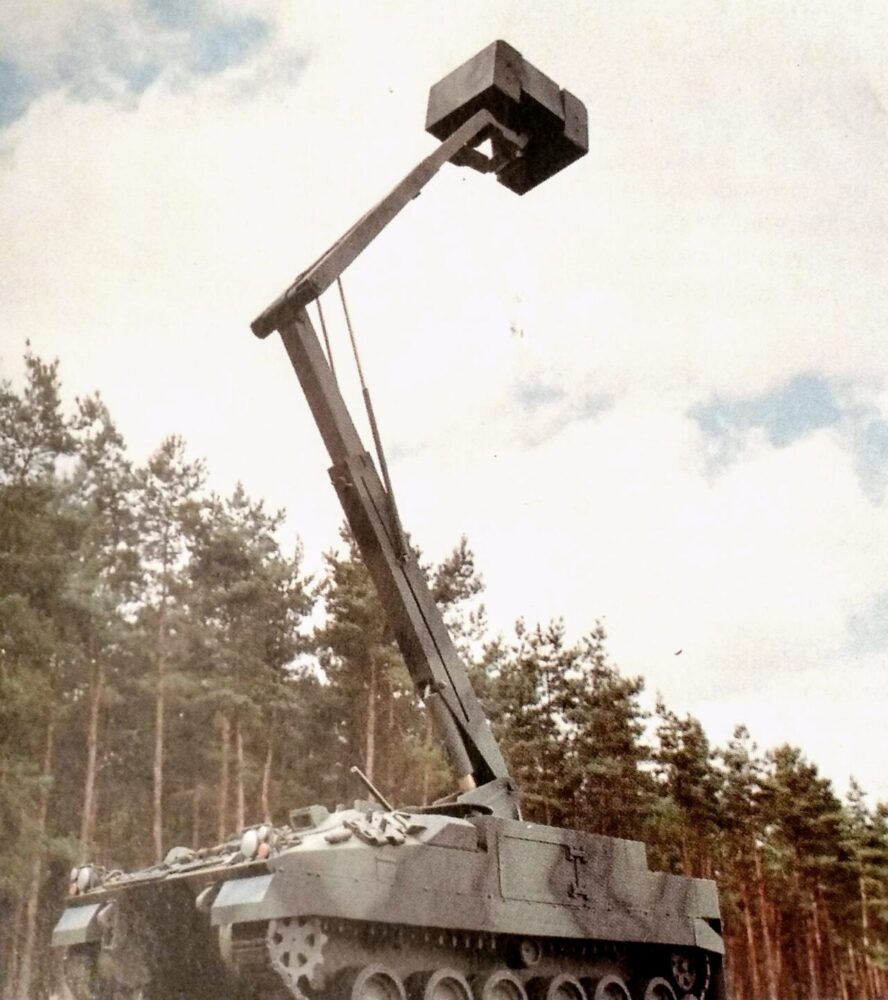
In response to the Iraqi invasion of Kuwait in August 1990, a coalition was formed that would see 35,000 British personnel deployed as part of Operation GRANBY. 4th Armoured Brigade, 7th Armoured Brigade and HQ 1st (UK) Armoured Division, and 5,000 vehicles, were all shipped to Saudi Arabia in time for the 1991 kick-off.
Several Warriors were modified with a turret-mounted Milan firing post. Although it could not be used on the move, it did provide much greater mobility for Milan than the FV432s would have.
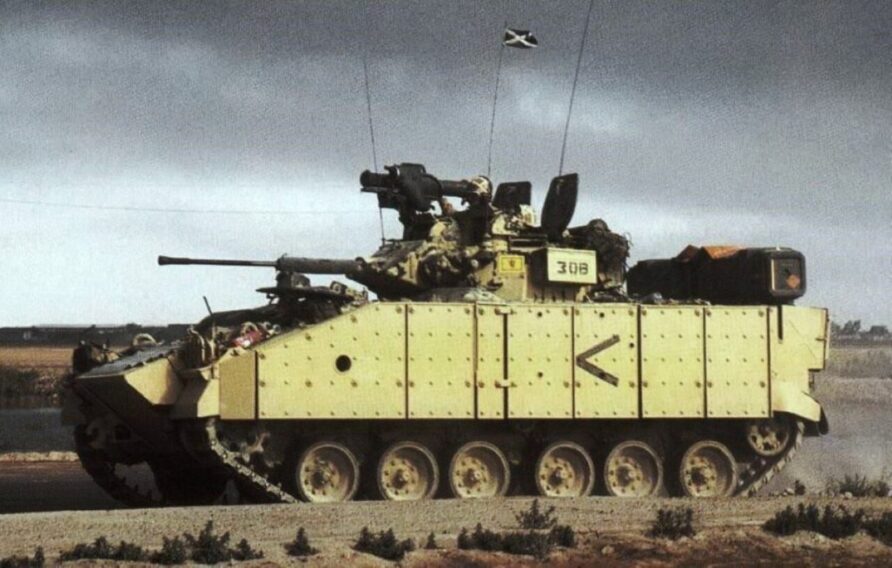
In addition to Warrior with Milan, Striker and FV438 with Swingfire also deployed to the Middle East.
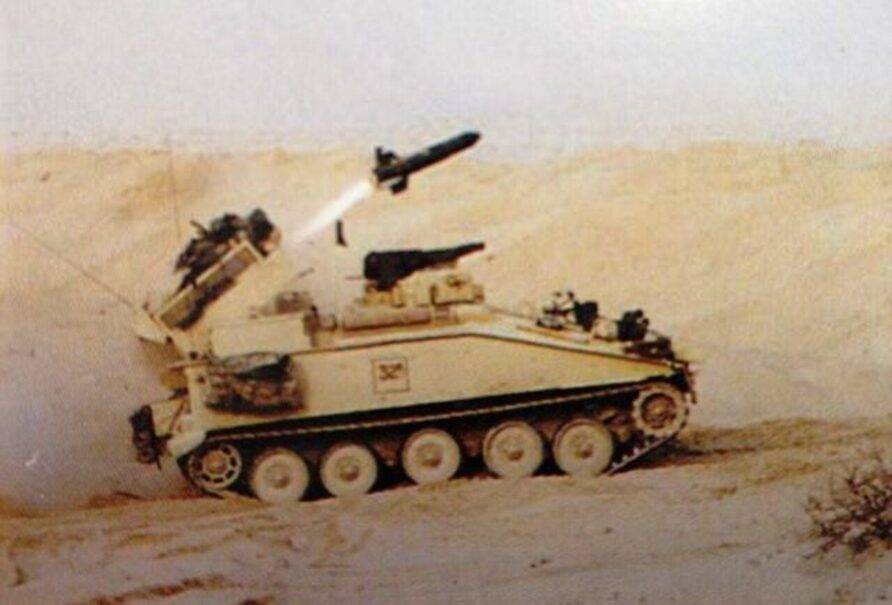
In the 1991 Major Projects Statement, the following update on TRIGAT-LR was provided
Formal notice of the UK’s intention to withdraw from the Long-Range project was given to our French and German partners in September 1991.
The National Audit Office published a report on the Introduction of the Apache Helicopter in 2002.
The decision to procure an Attack Helicopter was taken in the early 1990s. At that time, military doctrine was based on the assumption that the most likely threat to the United Kingdom was from the Eastern bloc and the Attack Helicopter was therefore seen as a direct replacement for the existing Lynx based capability. By the time the contract for the supply of 67 WAH 64 Apache helicopters was placed with GKN-Westland Helicopters Ltd (Westland) on 1 April 1996
Alongside the helicopter, the decision was also taken to select the Hellfire ATGW, replacing TOW.
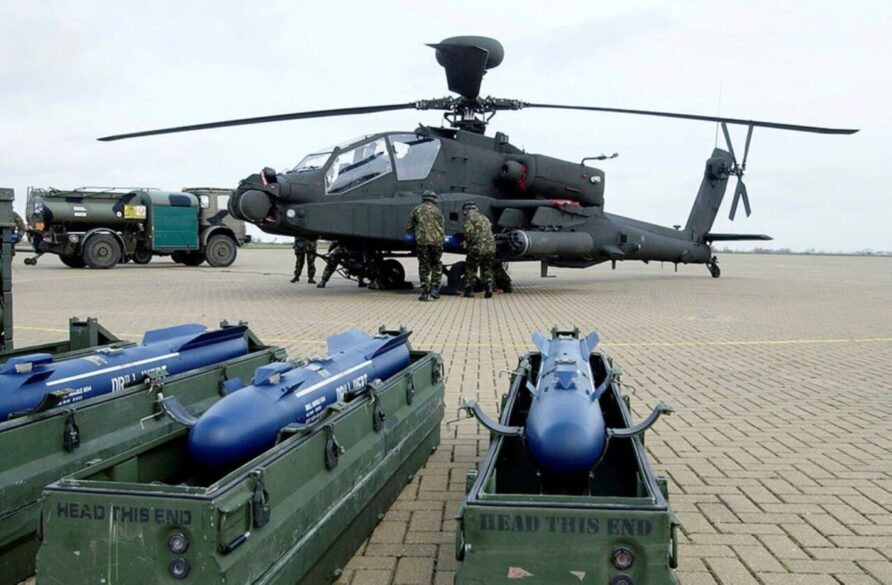
A year after Operation GRANBY, in 1992, Staff Target (Land) 4061, more commonly known as TRACER, Tactical Reconnaissance Armoured Combat Equipment Requirement was confirmed to be the CVR(T) replacement.
Read more about TRACER at the link below
Brimstone was selected for the RAF’s SRA 1286 in 1996, the same year that the WAH-64D Attack Helicopter was contracted for manufacture by the British Army.
The 1998 Strategic Defence Review (SDR) committed the UK to an interventionist foreign policy. The armed forces would need to be more joint, exploit technology and more be expeditionary, looking away from traditional Cold War legacy force design.
In September 2000, the Government announced the UK’s withdrawal from TRIGAT-MR, with a final forecast cost of £122 million, the final amount rising significantly in the following years.
In 2001, the UK and France also withdrew (finally) from the TRIGAT LR programme, leaving Germany to go it alone, finalising the development of TRIGAT-LR, and bringing it into service in 2013 as PARS-3. The cost of withdrawal from TRIGAT-LR was exceeding £200 million.
In October 2001, a statement was made to Parliament that in a joint US/UK decision, TRACER would come to a close at the end of the assessment phase in July 2002. The information gained would be used to inform FCS and FRES respectively, both programmes were to absorb TRACER and FSCS.
The total cost to the UK was confirmed at £131 million
The UK would go on to purchase Javelin to fill the TRIGAT MR hole, but Swingfire and Striker soldiered on, having seen off both TRACER and TRIGAT-LR.
The original goal to field a single long-range ATGW for both vehicle and helicopter launch was also unrealised.
Future Rapid Effects System (FRES), Iraq, and Ajax
Although it is well accepted that the 1998 SDR was a foreign policy-led document that failed to win the backing of the Treasury, it set in train a series of projects and programmes that would include FRES, the Future Rapid Effect System.
FRES first emerged in 2001 with the MoD requesting information from suppliers on how they could contribute to a medium-weight force.
Recognising the geopolitical change as a result of the 9/11 attacks, the New Labour government initiated discussions and consultations on a ‘new chapter’ for the 1998 Strategic Defence Review in February 2002. The Strategic Defence Review – New Chapter was published in July 2002.
We must retain the ability rapidly to deploy significant, credible forces overseas. It is much better to engage our enemies in their backyard than in ours, at a time and place of our choosing and not theirs. But opportunities to engage terrorist groups may be only fleeting, so we need the kind of rapidly deployable intervention forces which were the key feature of the SDR.
Despite the 1998 SDR and 2002 New Chapter, the Army went to Iraq with what were its Cold War legacy vehicles, the same vehicles, save for selected improvements, as they did in 1991 in the same location.
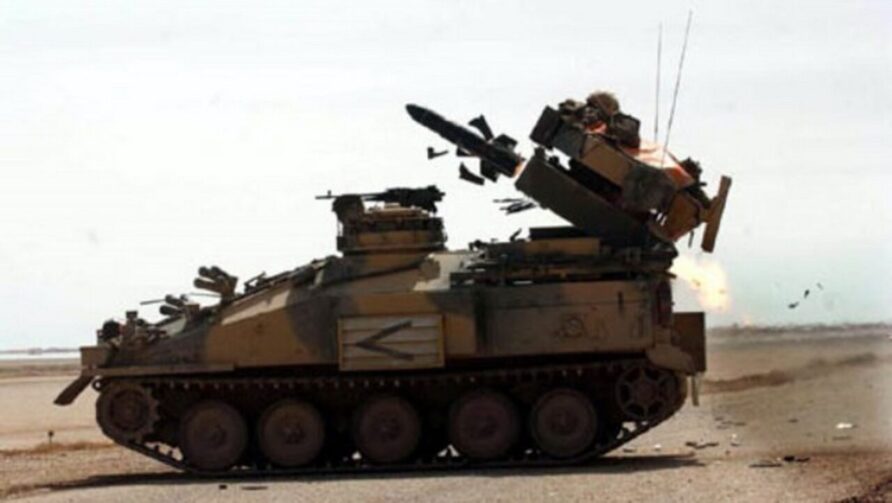
Very long story short. as FRES matured, it did carry over some conceptual frameworks from TRACER and MRAV
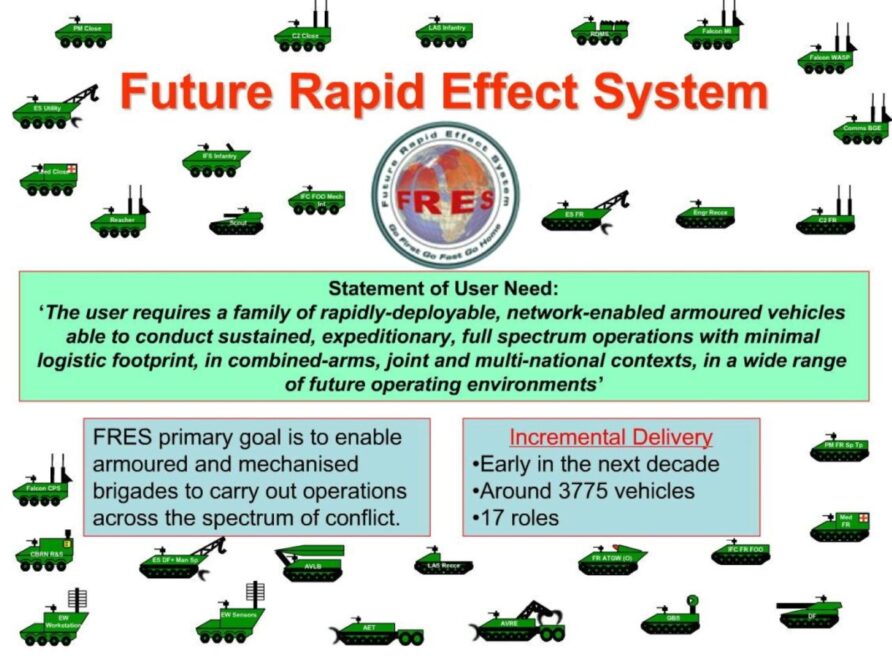
Tucked in that graphic is FR ATGW(O), Formation Reconnaissance Anti Tank Guided Weapon (Overwatch)
Delivering Security in a Changing World – Defence White Paper was published by the government in December 2003.
The Operation in Iraq – Lessons for the Future report, issued by MOD also in December 2003, made over 430 specific observations and recommendations, including that long-range ATGW (beyond 2km) were of proven value and that the Swingfire OSD should be reviewed (TEL.0.304)
5.6 The Swingfire anti-tank guided weapon system, which is fitted to some UK reconnaissance vehicles, was also of great utility during the combat phase. It was the longest-range, integral weapon system available to reconnaissance units and was used in approximately half of their attacks despite representing only a quarter of their main weaponry.
Swingfire and Striker were finally withdrawn in 2005/6, without replacement, at the same time as the Milan Compact Turret on a Spartan.
As FRES developed, Recce Block 3 included a mounted overwatch variant called ‘Formation Reconnaissance (Overwatch)’
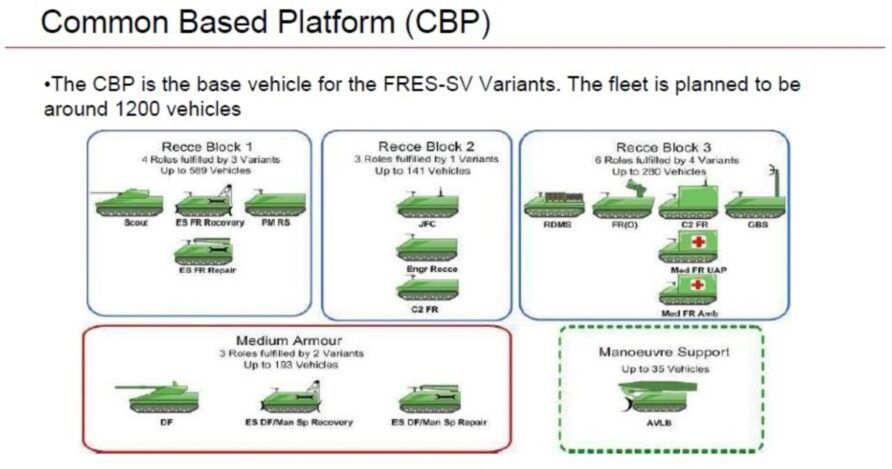
FRES was closely tied to the US FCS programme, and as operations in Iraq increasingly showed the importance of protected mobility, FCS was facing its problems.
After being restructured in 2007 in response to the requirements of operations in Iraq and Afghanistan, the new Defense Secretary (Robert Gates) was about to mark the card of the FCS. Delivering a speech in Colorado in May, Robert Gates vented his frustration with the US military, and indirectly, the FCS programme.
FRES continued, but Iraq and the well-publicised issues of bringing the FRES wheeled variant into service would eventually cause the FRES programme to cease, with the Army going forward with a single programme to replace CVR(T), called Specialist Vehicle (SV), or Scout.
SV would eventually be won by General Dynamics
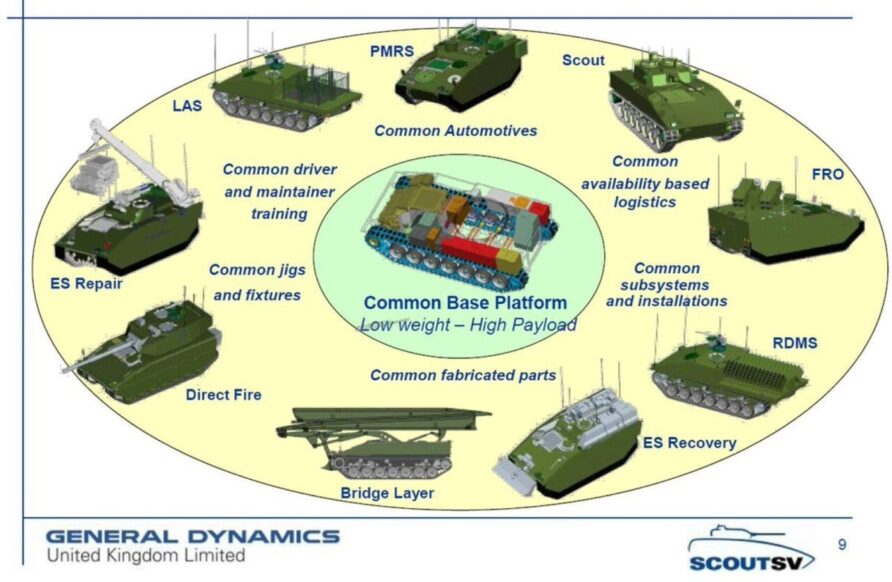
As can be seen in the image above, Formation Reconnaissance Overwatch was still in concept.
Formation Reconnaissance Overwatch (FRO) was retained within Recce Block 3, but was descoped post SDSR 2010.

Direct Fire was also dropped from the final Ajax line-up.

The Striker role looked increasingly likely to be covered by dismounted Javelin teams.
Until Mounted Close Combat Overwatch (MCCO) enters service, that is the default position
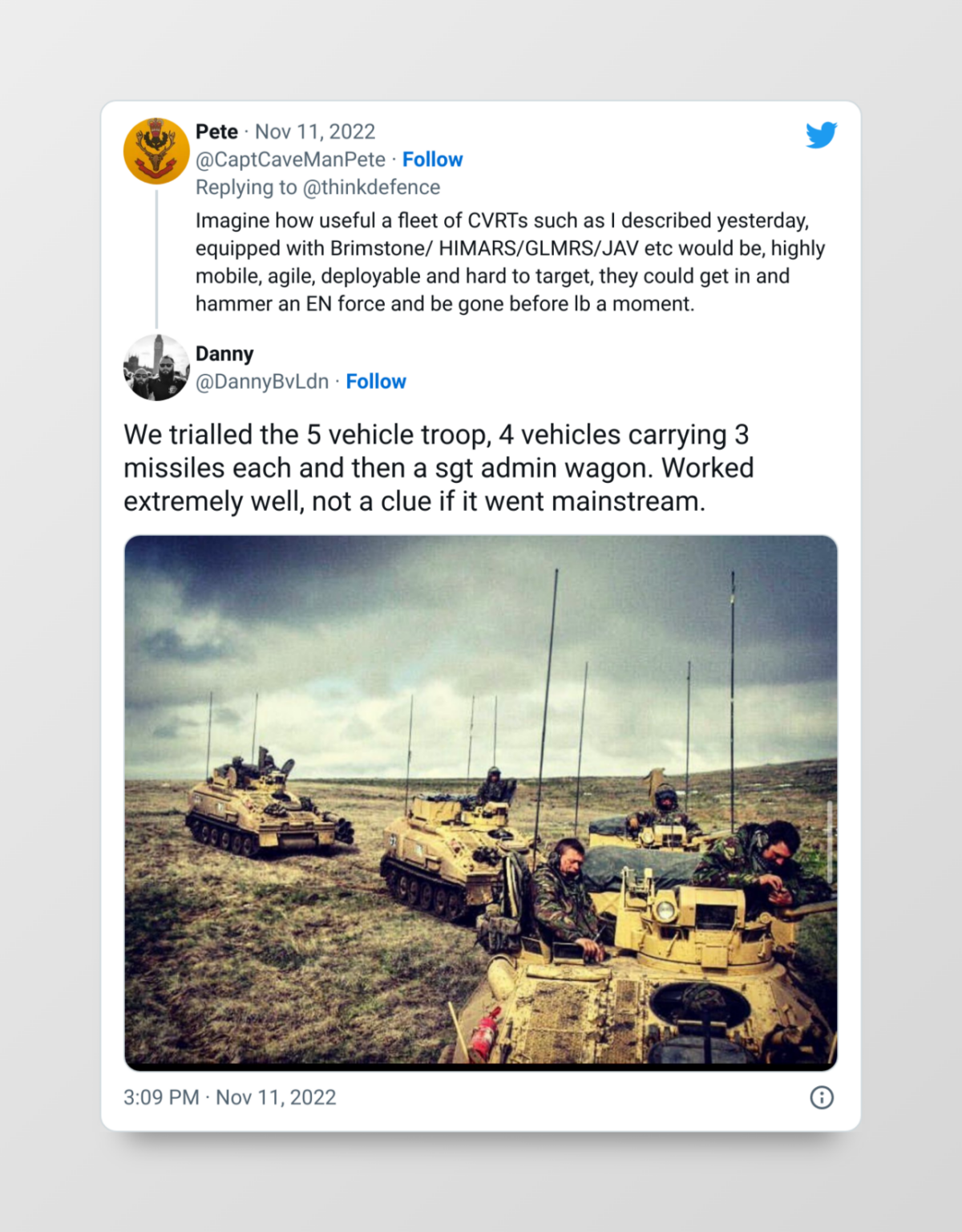
To summarise
Although Striker and FV438 used the same missile, they were used for slightly different roles, the former staying in service nearly two decades after the latter. Swingfire was certainly of its age, and no doubt debates about relative values between it and TOW, Milan and other missiles will continue, irrelevant, though.
The simple fact is the concept and system were proven on operations, twice.
The ability to fire from defilade positions and concealment, not reproduced by any comparative system, was way ahead of its time, and one might argue many modern systems today cannot do likewise.
Attempts at replacing it failed for various reasons and since it left service nearly two decades ago, a vehicle-mounted long-range ATGW has not been in service with the British Army.
A recent Parliamentary Defence Select Committee report took evidence from several witnesses, Ben Barry commented…
“Another firepower differential is the capability to fire ATGW from underneath armour. In the Cold War, the British FV 438 and Striker AFVs could fire Swingfire ATGW from under armour… Between 1991 and 2005 these capabilities were all abandoned… So, when British [armoured forces] are attempting to manoeuvre against the enemy, the only way of rapidly firing Javelin ATGW will be for crews to stand in open vehicle hatches. This will be slower than if the British had ATGW-equipped turrets and the operators will be much more vulnerable to enemy fire … With its aviation brigade due to receive 50 new AH64E Apache helicopters, the British Army will have a powerful rotary wing ATGW capability… But the aviation brigade’s effectiveness will be limited by two “inconvenient truths”. The first is that the Russian Army has a much greater air defence capability than the British army. Secondly, enemy AFVs fitted with active protection will be much less vulnerable to Hellfire missiles … Russian indirect fire is likely to outgun, outrange and outnumber indirect fire available to UK and NATO formations … This will place their opponents at a considerable disadvantage, increasing the chance of artillery fire damaging AFVs, and destroying light armoured vehicles. This increases the importance of replacing the remaining FV432 and CVR(T) vehicles in the Army. It also increases the importance of modernising the Army’s artillery, an enhancement that does not appear to be funded.”
Setting up a discussion on MCCO is a multi-decade story of problems and waste.
Before reading on, would you mind if I brought this to your attention?
Think Defence is a hobby, a serious hobby, but a hobby nonetheless.
I want to avoid charging for content, but hosting fees, software subscriptions and other services add up, so to help me keep the show on the road, I ask that you support the site in any way you can. It is hugely appreciated.
Advertising
You might see Google adverts depending on where you are on the site, please click one if it interests you. I know they can be annoying, but they are the one thing that returns the most.
Make a Donation
Donations can be made at a third-party site called Ko_fi.

Think Defence Merch
Everything from a Brimstone sticker to a Bailey Bridge duvet cover, pop over to the Think Defence Merchandise Store at Red Bubble.
Some might be marked as ‘mature content’ because it is a firearm!
Affiliate Links
Amazon and the occasional product link might appear in the content, you know the drill, I get a small cut if you go on to make a purchase
Mounted Close Combat Overwatch (MCCO) — Effector Options
The publicly available materials on MCCO are relatively vague, as would be expected, at this stage.
DSTL is working within Weapon Systems Research Framework and with prime contractors, Lockheed Martin, MBDA and Thales.
In pre-concept publicity materials, they describe a number of additional high level-characteristics of MCCO.
- Non line-of-sight capability
- Third-party/remote targeting and control
- New sensors to overcome active protection systems and defeat the enemy’s electronic or electro-magnetic defences
- Capable of engaging targets up to 10 km away
- Missiles weighing up to 50 kg
Nothing on…
- Warhead effects
- Attack angle
- Speed
- Environmental constraints
- Sensor and Effector integration
- Offboard cueing and inflight re-targeting
- Simultaneous engagement of multiple targets
- Guidance modes
- Vehicle integration
And many more.
But there are some obvious potential options for the effector part of the requirement…
Joint Air to Ground Missile (JAGM)
The Lockheed Martin Joint Air to Ground Missile (JAGM) is a replacement for the Hellfire, Maverick and TOW missiles, based on Hellfire.
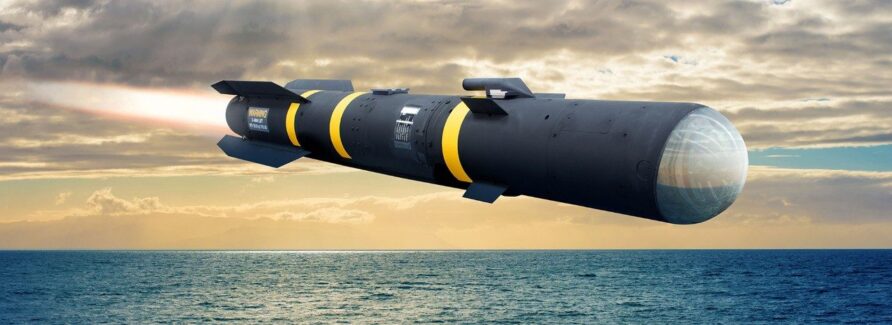
JAGM has been selected by the British Army to equip its AH-64E Apache attack helicopters over Brimstone 3. The missile retains the Hellfire propulsion and warhead assemblies, with a new dual-mode seeker.
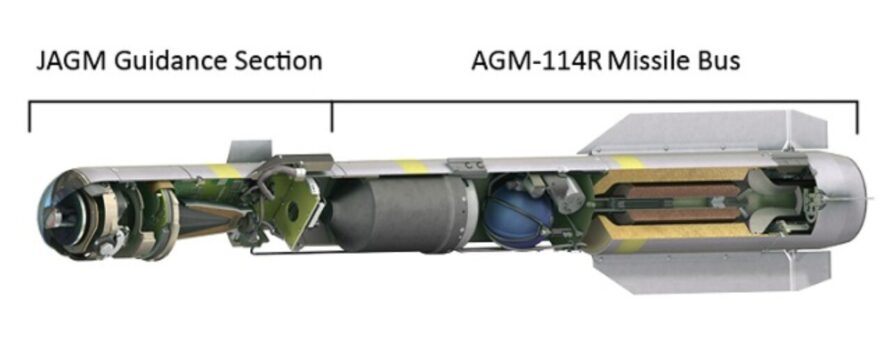
A new Medium Range variant has also recently been developed to include a new tri-mode seeker and propulsion section to enable a 16km range, keeping the weight in the 50kg class.

Brimstone
Brimstone 3A retains all the critical components from Brimstone 2
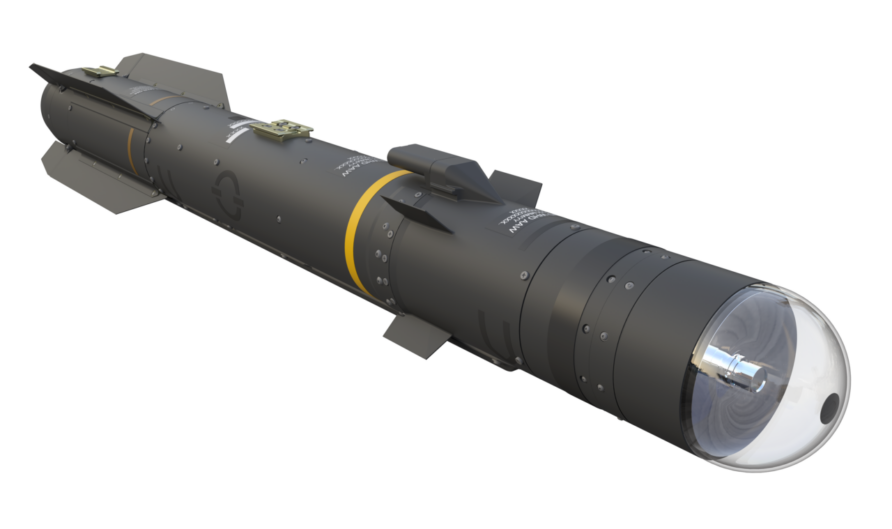
B3A enhancements include a new microelectromechanical system (MEMS)-based tactical inertial measurement unit (IMU) developed by Atlantic Inertial Systems (AIS) and a new enhanced autopilot for improved precision at extended ranges. B3B, awarded in 2020, incorporates a range of improvements, including a 20% increase in range. An improved battery also provides an additional 30% engagement duration.
TDW also developed an improved multi-effect warhead for Brimstone 3 that was designed for use against various targets as shown in the image below.
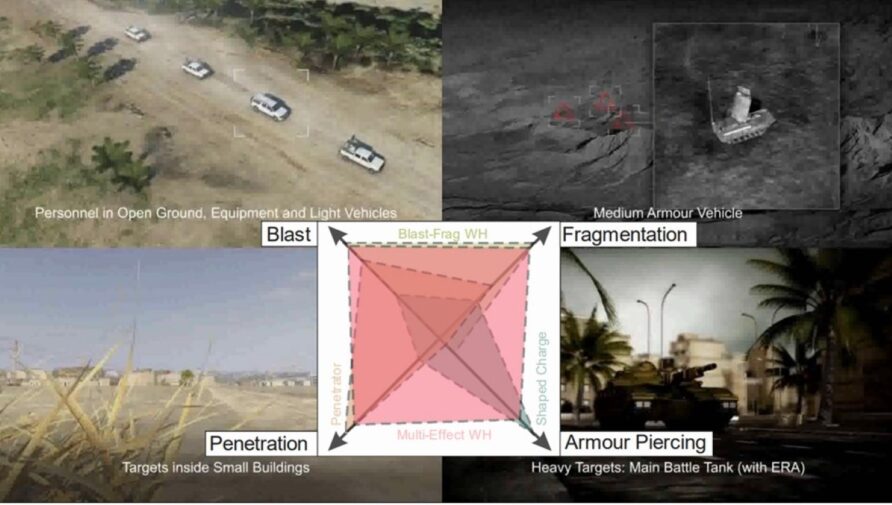
It could also be used in a number of modes, also as shown in the image below.
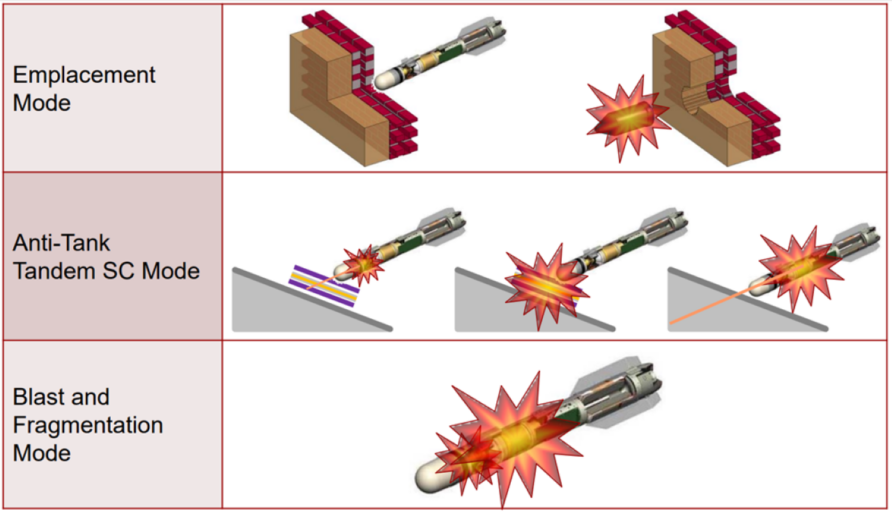
This new warhead is also fully compliant with STANAG 4439 for IM.
Brimstone 3 is also in the 50 kg weight class as JAGM and the range is comparable with the MR variant. (see my long read on Brimstone for more details on its range)
Exactor
Exactor is the UK designation for SPIKE-NLOS.
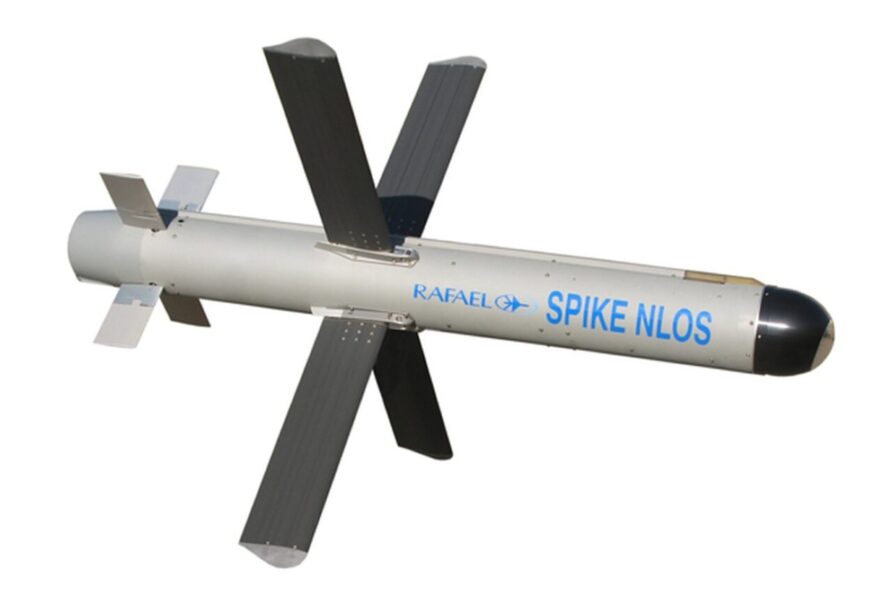
With an effective range of between 25 and 30 km, it weighs 71 kg in its canister, much larger and heavier than the previous versions, and also larger and heavier than JAGM or Brimstone.
Early missiles were guided to the target manually using a daylight TV seeker, but this has been progressively improved so that current missiles can utilise a day/night semi-automatic seeker, GPS and a two-way RF data link to enable inflight target acquisition and guidance, the latter being especially important in operational situations with demanding and complex rules of engagement.
It can also be used with offboard target designation.
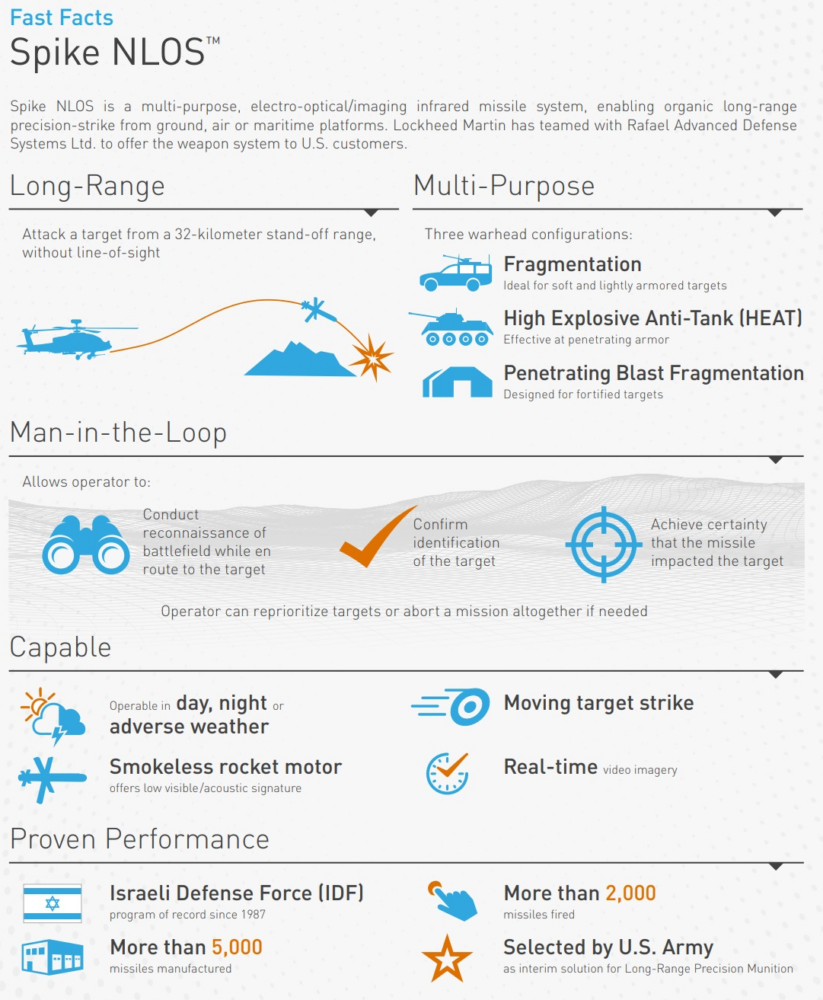
Akeron
Although not seen in any of the initial materials, it might be worth considering Missile Haut de Trame (MHT) or Akeron Longue Portée (LP), also from MBDA.

Akeron LP will arm the Euro Drone medium-altitude long-endurance (MALE) unmanned aerial vehicle (UAV) and, potentially, French and Spanish Tiger MkIII helicopters.
Akeron LP is still in development but will likely be slightly lighter than JAGM or Brimstone, but will have a comparable range and range of guidance options.
Loitering Munitions
The mid-two thousand Fire Shadow never entered British Army service, but more recently, loitering munitions have enjoyed greater use in multiple forces.
Fixed-wing designs tend to have a longer range and larger warhead, and most designs have only limited re-arm and re-use capability. Hero 30 and Warmate are good examples, although the AeroVironment Switchblade 300 is better known.
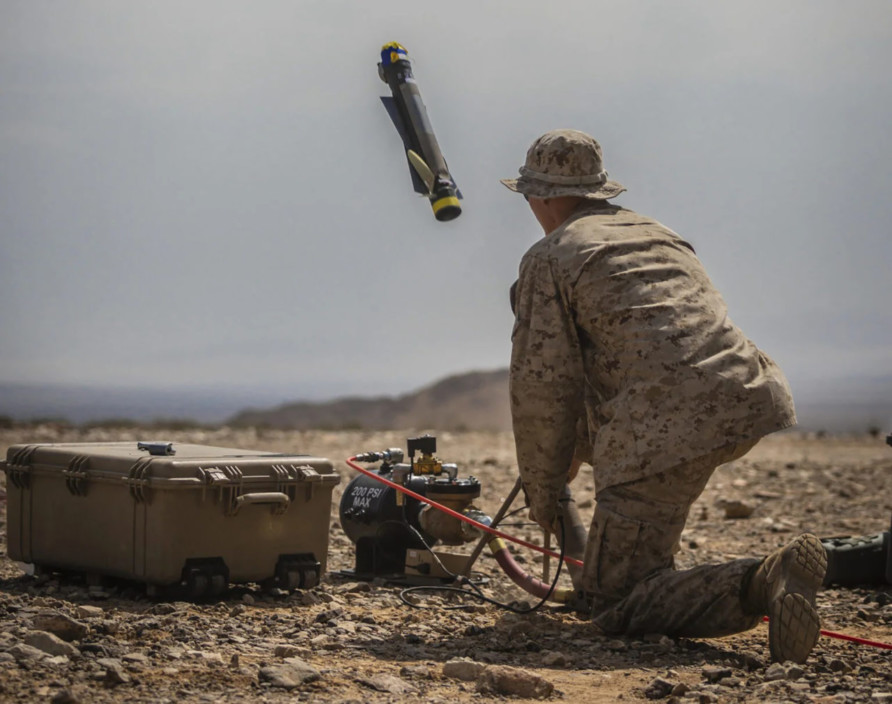
It is unlikely these small systems have the warhead capacity for use against modern heavy-armoured vehicles, so there are a smaller number of larger devices available that might potentially meet the MCCO requirement.
One example is the UVision Hero 120, also offered by Rheinmetall.
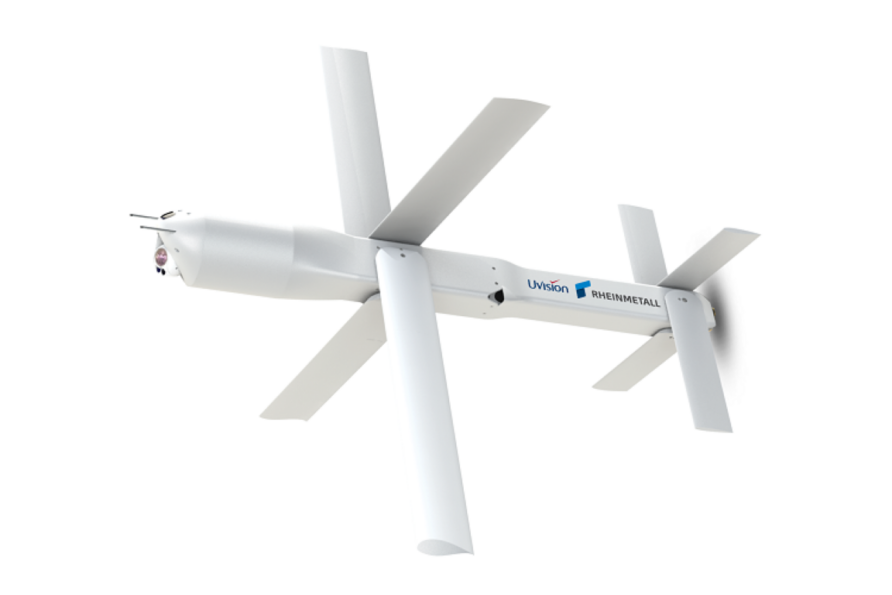
Hero 120 weighs 12 kg, with a 4.5 kg warhead and a range of 40 km. Hero 120 has been purchased by the USMC and demonstrated to the Royal Navy as part of their Percy Hobart Fellowship
The USMC version of Hero 120 was selected to meet the requirements of its Organic Precision Fire Mounted (OPF-M) programme, using the same warhead as fitted to Javelin. Mistral inc will deliver the programme.
The Hero 120 is certainly not a missile, and its range far exceeds that of the MCCO requirement. Guidance options are also different to either JAGM or Brimstone.
Guided Mortar Bomb
Arguably an outlier in the options, but 10 km and NLOS is certainly mortar territory.
Many decades ago, the UK developed the 81 mm Merlin guided anti-armour munition that used an advanced mmw radar sensor (not entirely unrelated to what would go on to become Brimstone)
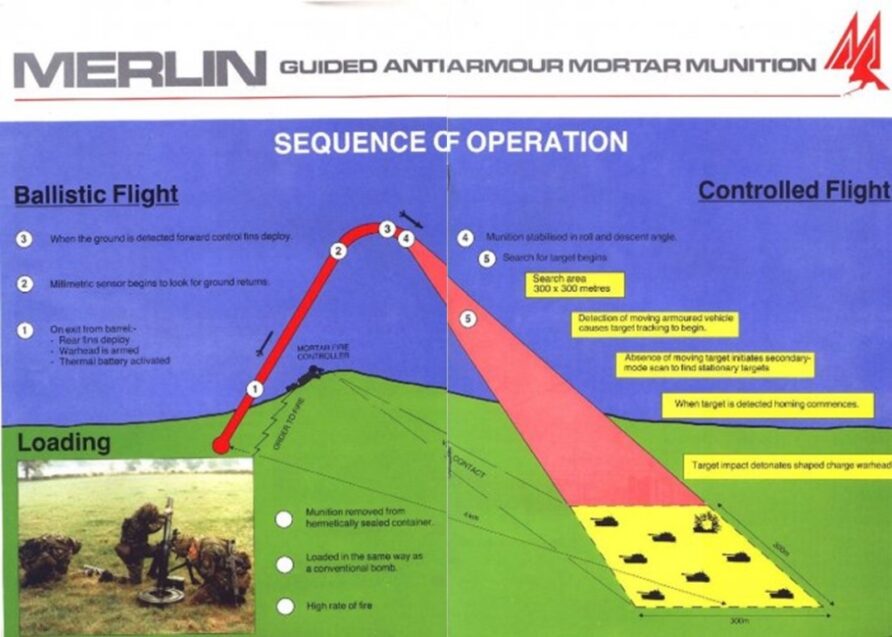
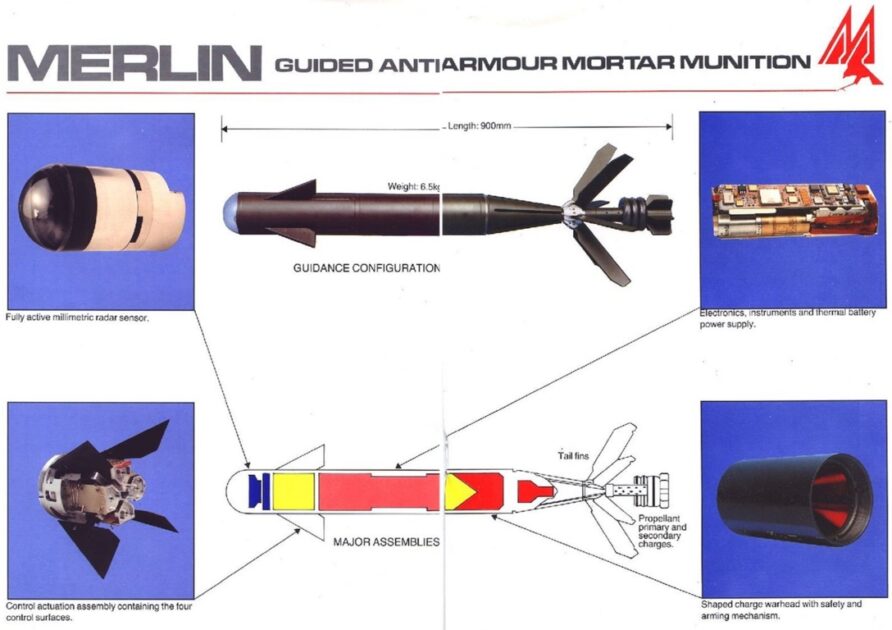
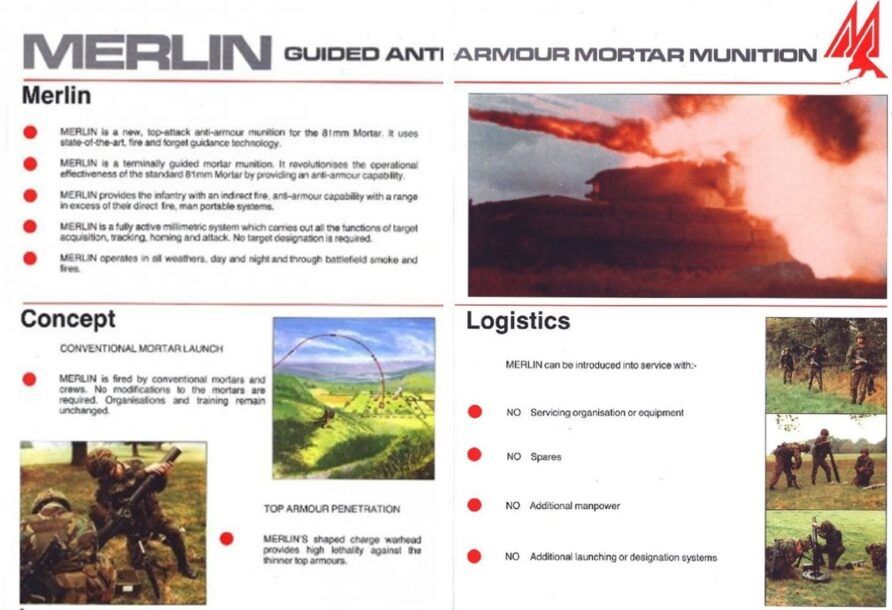
Merlin didn’t enter service but giving the mortar platoon an anti-armour role would extend their utility and if we are potentially introducing 120 mm mortars into the force mix (possibly on Boxer), it might be worth exploring as an option for MCCO.
Although there are a number of semi-active laser (SAL) or GPS/INS-guided mortar bombs, the options for attacking a moving target like a Main Battle Tank (MBT) are more demanding.
Although Saab doesn’t seem to have STRIX on their website any longer, it was a rather innovative system.
Mounted Close Combat Overwatch (MCCO) — Launch Platform Options
The initial materials released on MCCO didn’t specify any particular launch platform or vehicle, but as manufacturers have started to market their proposals, the obvious contenders have been shown in mock-ups or illustrations.
Certainly, in their marketing materials, MBDA has emphasised the potential for multiple types carrying the same vehicle.
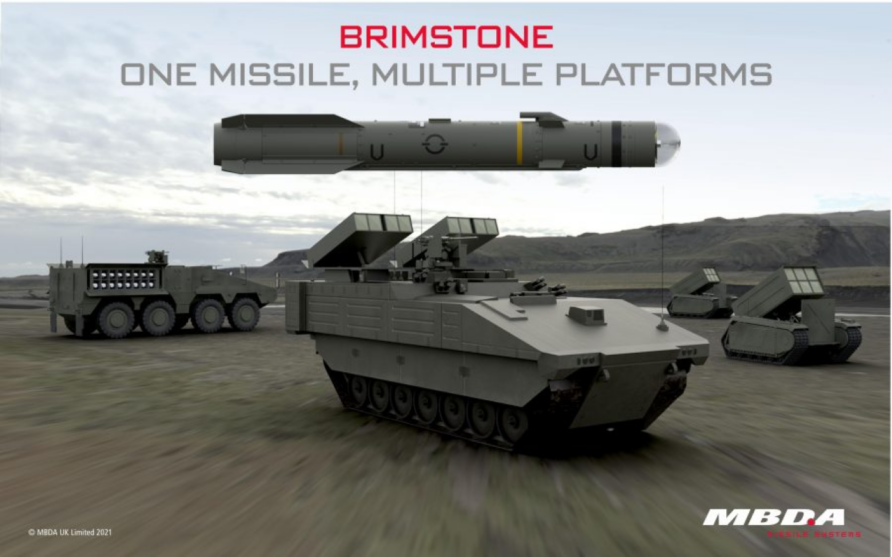
Uncrewed
Brimstone — Rheinmetall Mission Master XT
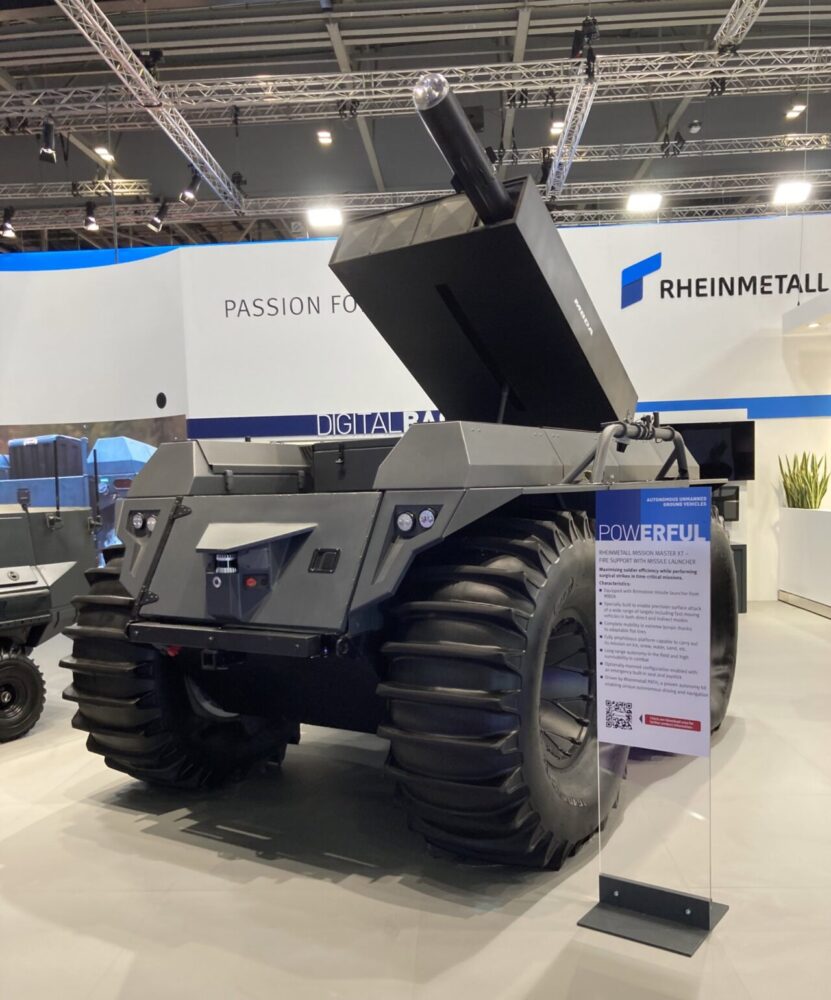
Brimstone — Milrem Themis
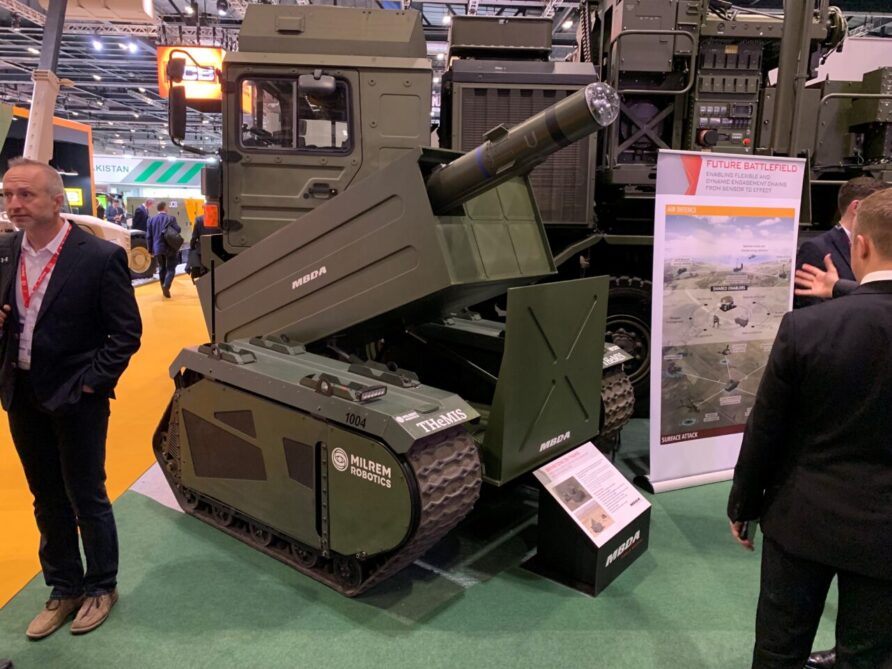
Hero 120 — Rheinmetall Mission Master XT

Hero 120 — Milrem Themis Combat
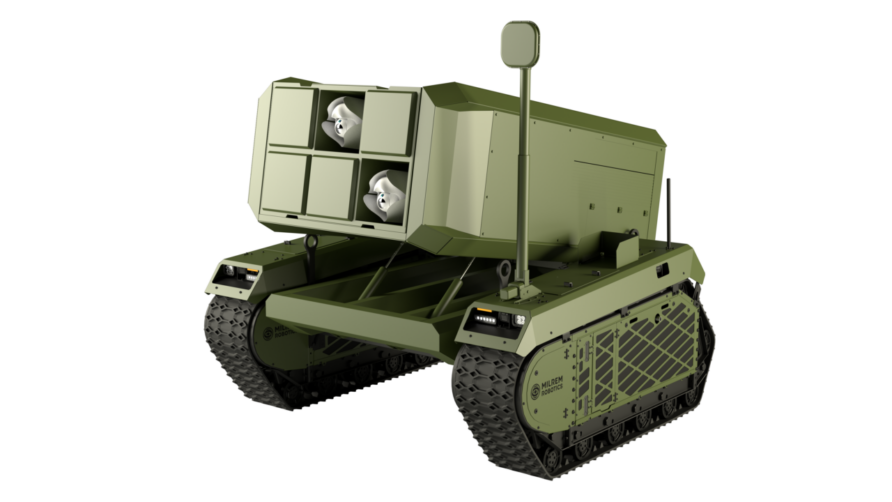
Boxer/Ajax/HMT/MAN SV
UVision, Lockheed Martin and RBSL/MBDA/Supacat/General Dynamics have shown various concepts and mock-ups, although none have been shown in fully finalised configuration yet (at least in public)
Brimstone
RBSL, MBDA, Supacat and General Dynamics have shown three base vehicles with Brimstone.
The Boxer variant uses a 2×4 elevating transverse box launcher, this being slightly different as the first version seemed to indicate a 2×8 configuration in a non-elevating configuration.
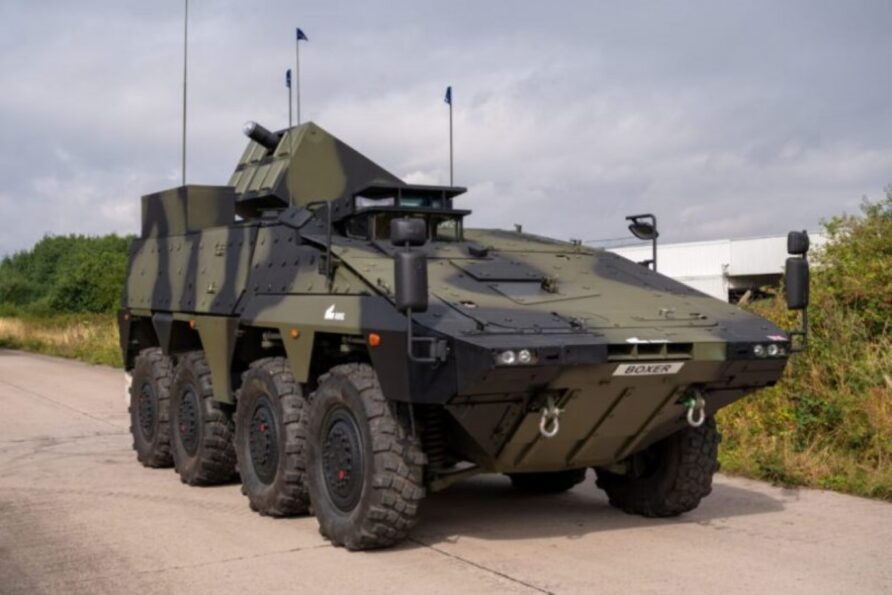
The Ajax/Ares variant uses two elevating longitudinal 1×4 box launchers in a non-penetrating mount.
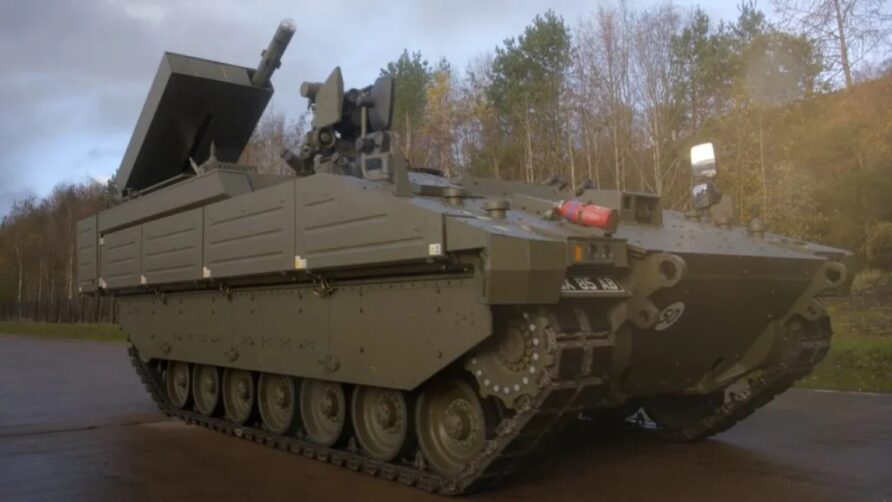
It is not known if either of these carries additional reloads in the hull.
The HMT 600 vehicle from Supacat has been shown with what appears to be the same 2×4 launcher as those on Boxer.
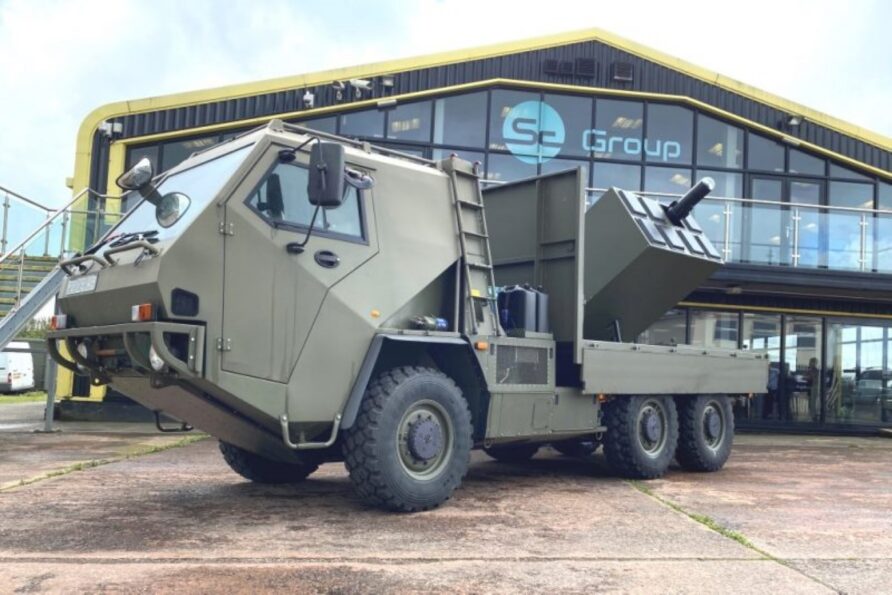
This is aimed at lighter forces and for Chinook transportability, shades of LIMAWS(R), and developed as a separate rapid effort called Project Wolfram.
JAGM
The Lockheed Martin JAGM concept for MCCO appears to show a high-roof Boxer module with a Vertical Launch System, integral sensor/data link mast and hydraulic loader.
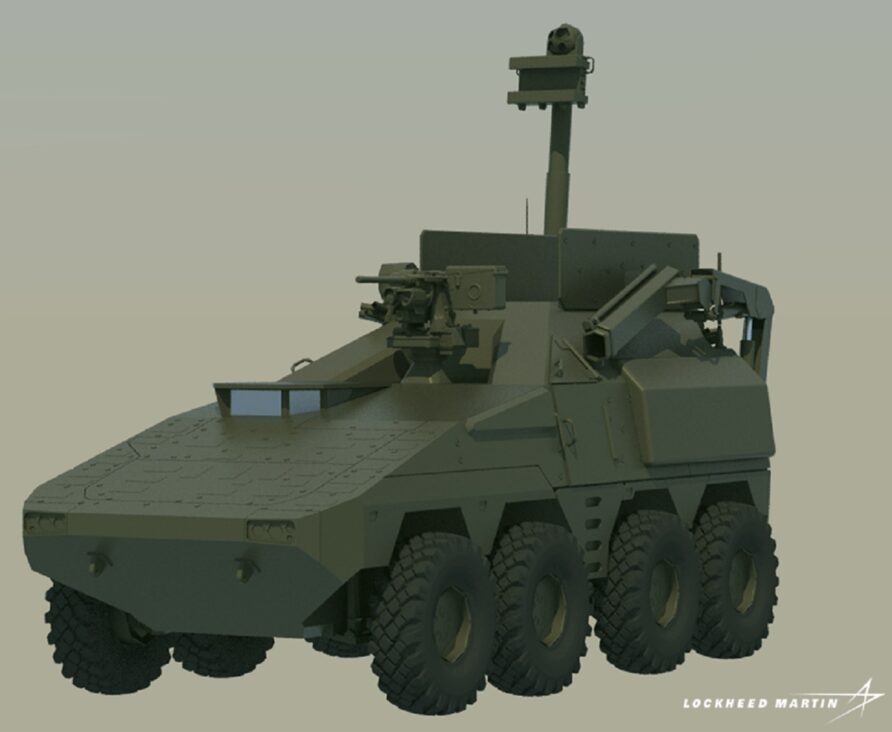
It might be a bespoke VLS or one adapted from the JAGM Quad Launcher (JQL), leveraging Lockheed Martin’s’s expertise with Mk41 and eXLS systems.

Another interesting aspect of the Lockheed Martin solution is what appears to be a data link to a UAS (likely the UK-developed LM Outrider).
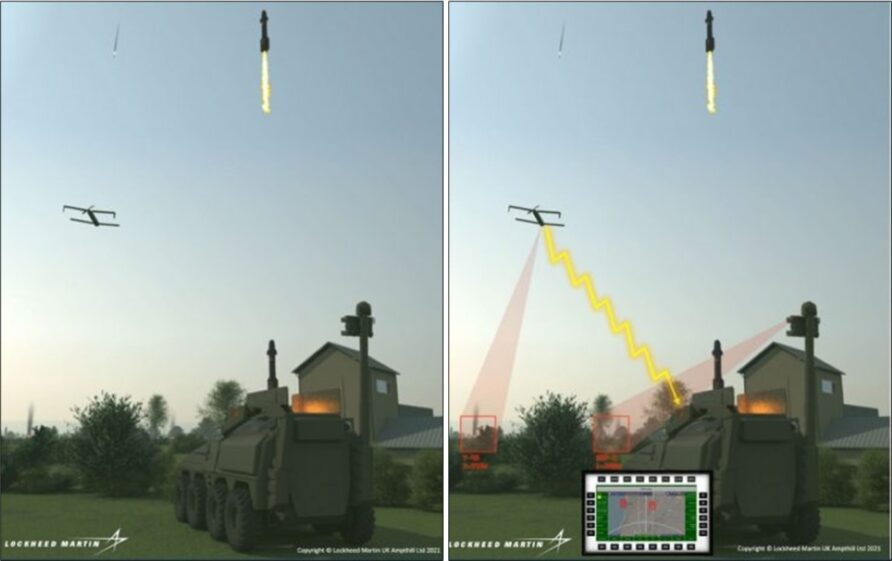
A final image shows a containerised version carried on a MAN SV truck, able to carry up to 50 missiles (or about $16m worth)
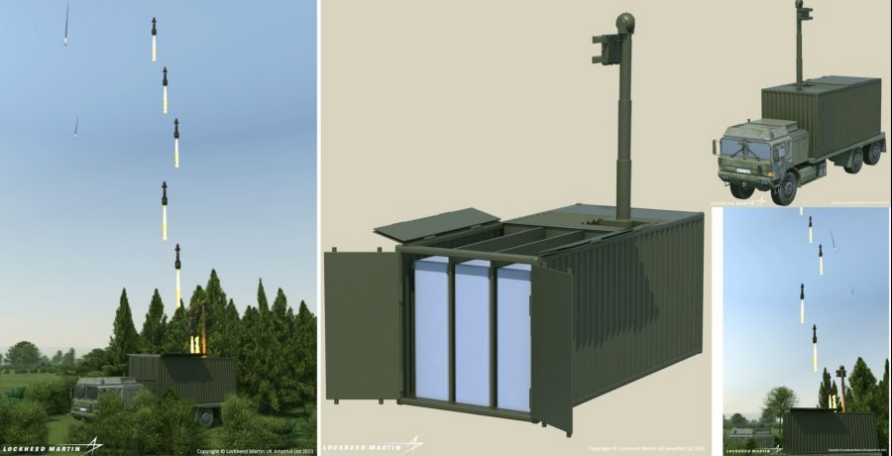
Hero 120
Only a single concept image at the minute, from Rheinmetall and UVision.
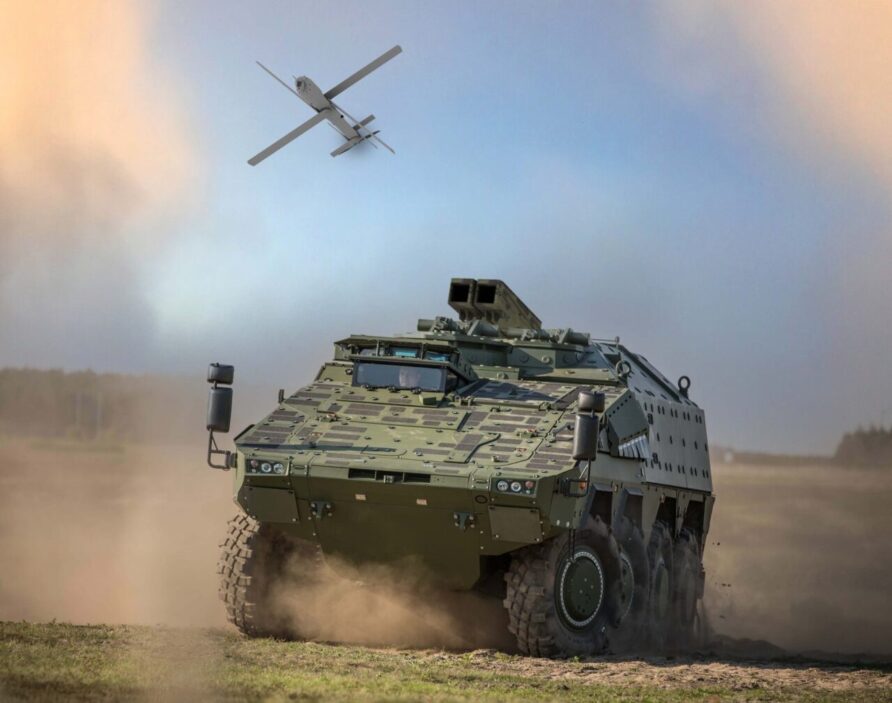
A JLTV mock-up.
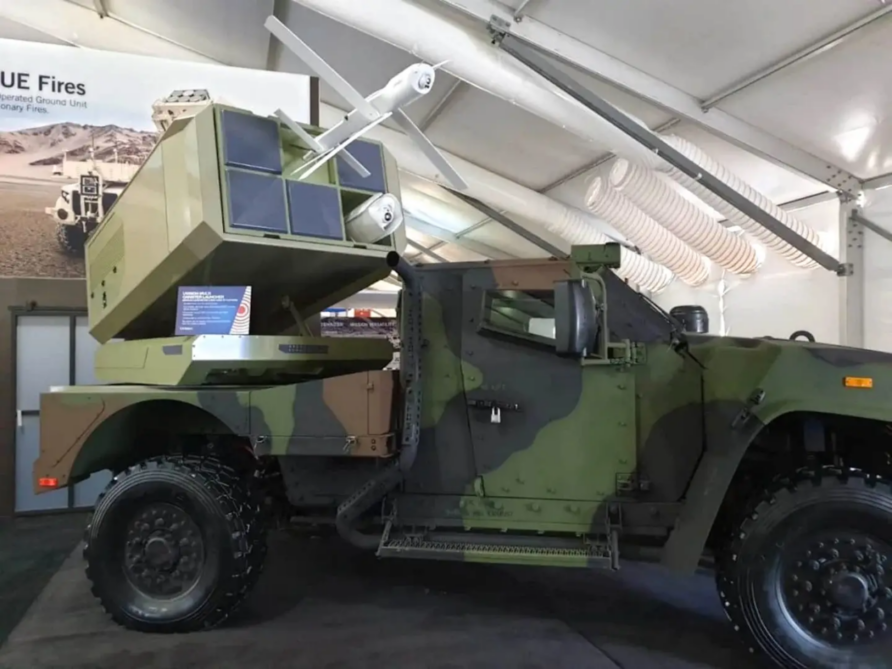
Light Role
None of the marketing materials seems to have addressed the potential for light role application of MCCO, fair enough I guess, but I do think it is still worth exploring.
The lightest shown so far is the 2×3 pod on a Milrem Themis, but that is still a minimum of 150 kg.
Although not a completely comparable missile (being more akin to Javelin), the Griffin wedge launcher is remarkably similar to the 4-round Swingfire pallet launcher shown above on a Land Rover.
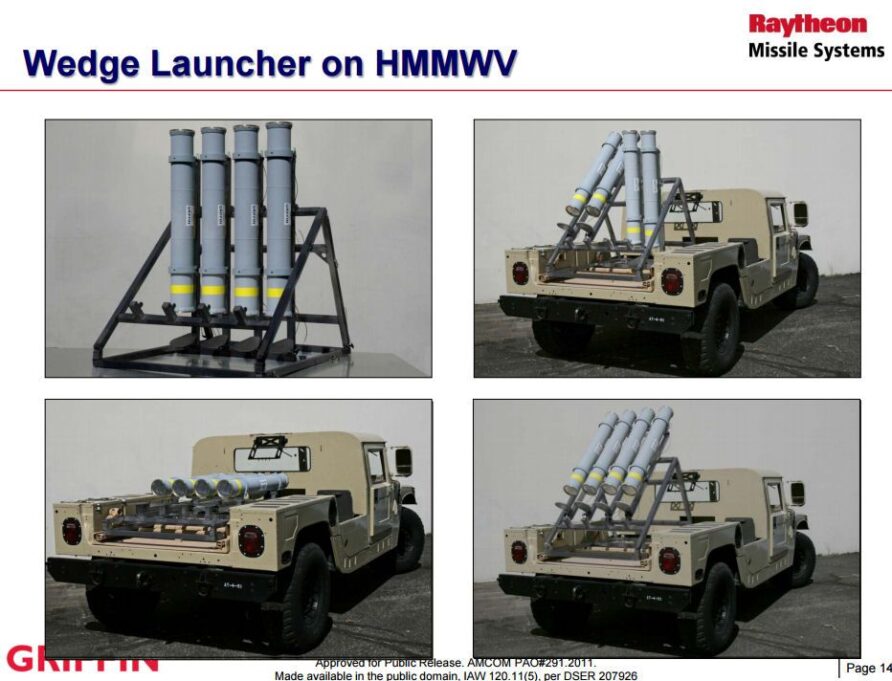
At 180 mm in diameter, a 1mx1.2m palletised frame launcher could easily accommodate 4x Brimstone or JAGM, weighing less than 250 kg. A 250 kg 1mx1.2m load is well within transportability constraints for even a small ATV or quad bike, let alone a side-by-side ATV style vehicle.
Although I didn’t specifically list the Andruil Altius loitering munition above, the general arrangement is shown below (accepting you would not do this with the rocket-propelled JAGM or Brimstone unless wearing factor 5000 sun cream)
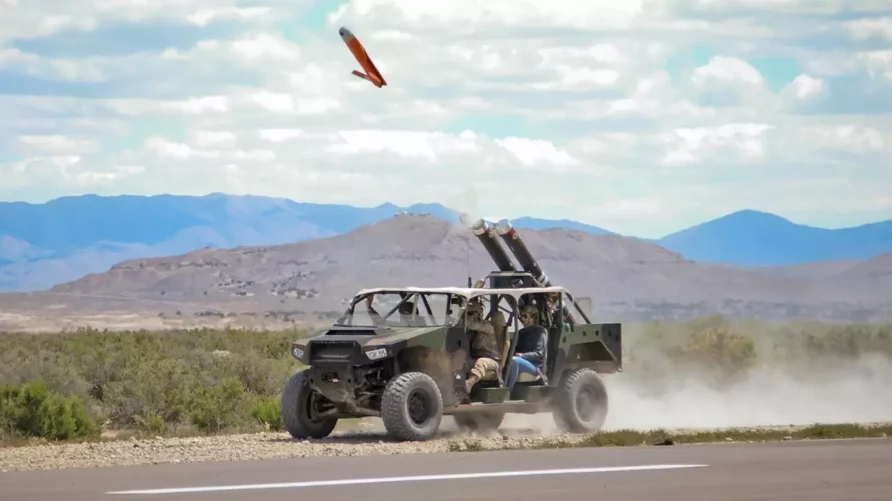
Or this, a Nimrod missile in service with Colombia.
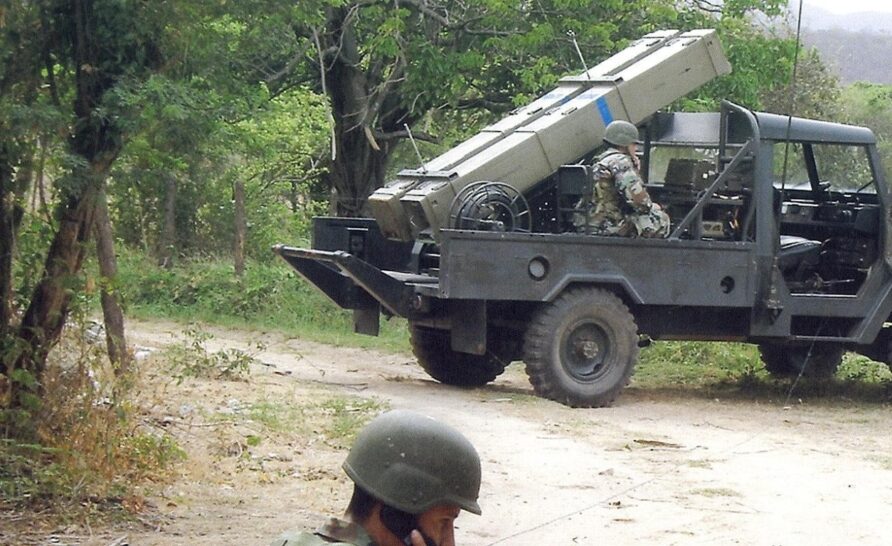
Flyer Defense has shown one of their vehicles with a Hero 120 launch assembly.
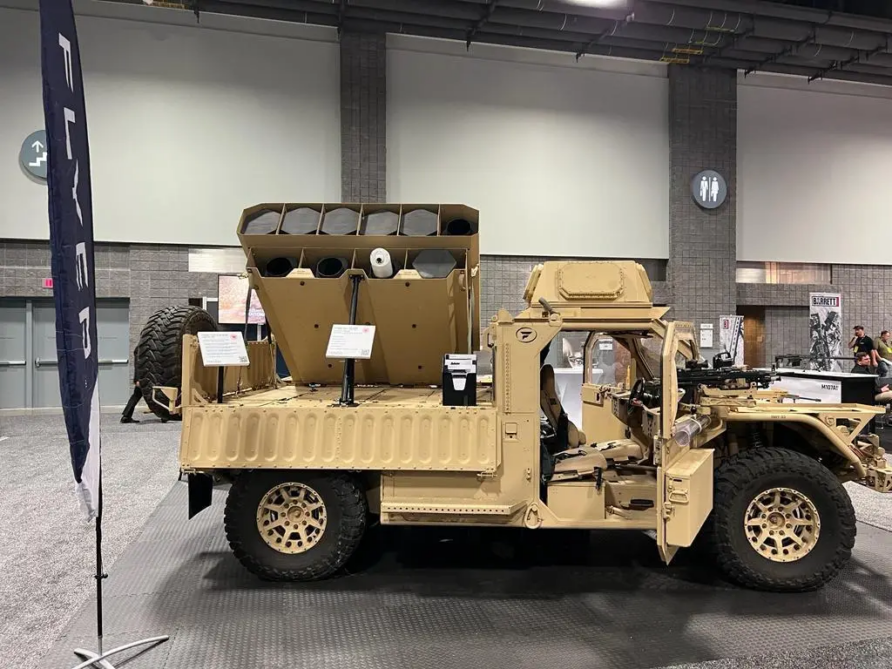
Another interesting option might be to look at them in singles.
Hellfire does have the option for a tripod launcher.
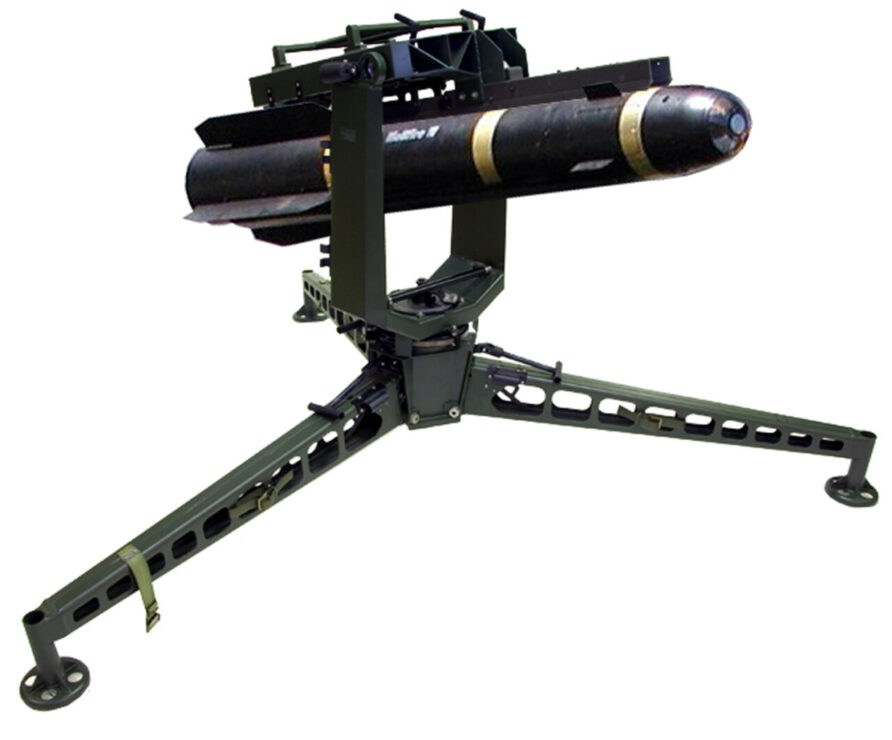
Sweden also uses a modified Hellfire called Robot 17 (Robotsystem 17) in this configuration for coastal defence, some recently donated to Ukraine.
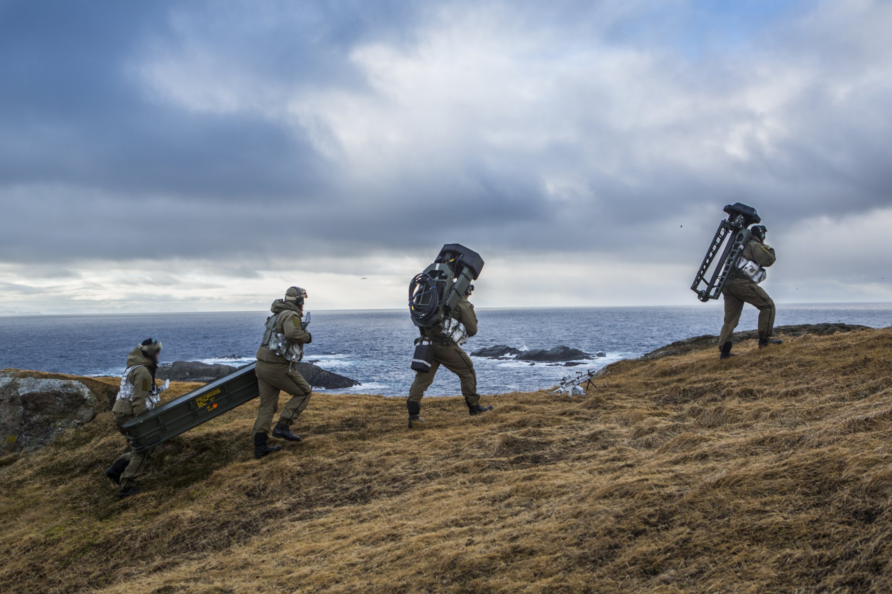
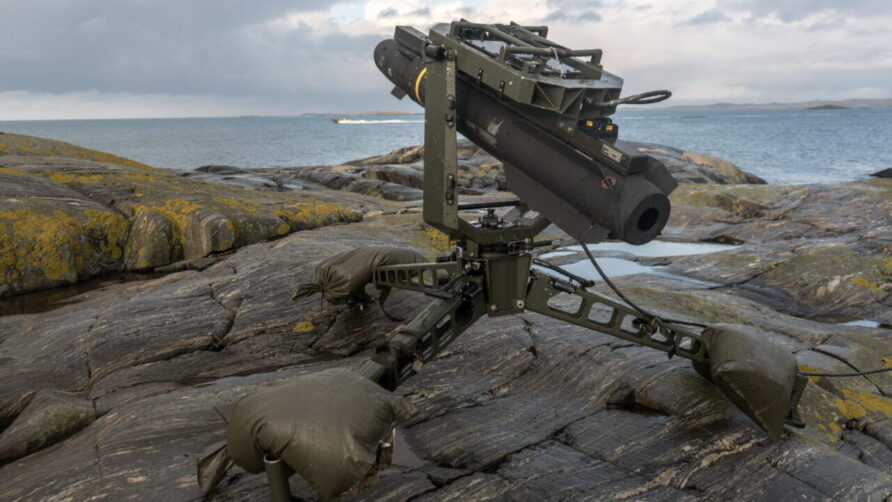
Without being too specific, I do think there exists some scope for using whatever is chosen for MCCO for light-role and specialist forces.
Even though no one is asking for it.
Discussion
Is a Twenty-Year Gap Really a Gap
From the linked article that describes the concept…
We still need to have lethality against armoured systems because, although not all may be top of the range vehicles, there is a prevalence and a proliferation of armour, right down to some relatively less well-developed nations
This seems like an intelligent observation, the proliferation of armour, and not just the more developed nations, this needs to keep pace with threats out to 2050.
As described briefly above, the UK effectively replaced Swingfire with dismounted Javelin teams.
Like Formation Recce of old, like STRIKE, and like Deep Recce Strike, an anti-tank protective bubble inside which they can operate is important because simply put, they aren’t tanks.
If Ajax bumps into a T-72B as it is roaming in the deep, it might be approaching a terrible day.
Dismounted Javelin teams can exploit the fire-and-forget capability and small launch signature of Javelin to improve survivability, but can they keep up?
In the offence, I doubt it, hence the requirement for MCCO sounds perfectly reasonable and defensible to me.
If we are to counter massed-armour, MCCO would be a vital piece of the jigsaw.
Would Javelin Do?
With a requirement established at a high level, the first challenge it will face is this simple question.
Can we do it with Javelin?
Mounted Close Combat Overwatch (MCCO) is part of the wider Battle Group Organic Anti-Armour (BGOAA) requirements, and BGOAA includes the Close Combat Anti-Armour Weapon-Mounted (CCAAW-M).
Many have interpreted this as a Javelin replacement, and one that can be fired from a turret-mounted RWS or launcher.
Javelin and Kongsberg Protector RWS completed firing trials on a CVR(T) Spartan as long ago as 2016, including one shot at 4.3km.
Javelin has also been shown firing from a turret launcher on Boxer.
Javelin (or its most likely successor) does not meet the 10 km range requirement of MCCO, and it is just about a single-shot weapon unless some new multi-launcher development is completed.
No one seems to have anything like this in service.
One of the fundamental points of Mounted Close Combat Overwatch (MCCO) is that it must be able to outrange enemy MBT guns and ATGW, one could argue that Javelin does not (although CCAAW-M might). A single launcher on the side of a turret or RWS is limited against multiple targets.
A Remote Weapon Station (RWS) only provides for a single engagement before having to manually reload, partially outside the protective envelope of the vehicle.
At a push, as an interim, maybe, but given the concept of operations and requirements, it seems unlikely that Javelin would, in fact, do.
But Loitering Munitions are So Hot Right Now
Loitering munitions certainly consume a great deal of marketing bandwidth at the minute, and although the Army seems to have excluded them from the MCCO Pre Concept work, can it continue with this exclusion?
The problem with loitering munition is they are simply not as survivable as JAGM or Brimstone, they might be cheaper, but if you are throwing three or four of them at a target set because most are getting shot down, that is a clear example of Penny-wise Pound-foolish.
That is not to imply that the latest generation of loitering munitions have no value, of course, they do, but if your primary target is enemy MBTs, I would propose that questions of survivability, and assured and timely destruction, need to be answered by a missile.
Engagement time is important.
What About Land Precision Strike?
One of the challenges for the Army in getting MCCO (that isn’t Javelin) into service is that it crosses over with Exactor and, by extension, Land Precision Strike.
The Army does have to frame Land Precision Strike and Mounted Close Combat Overwatch as separate capabilities, or it will suffer from confusion in the minds of decision-makers.
At the minute, most of this is a pre-concept stage but already, there have been a handful of name changes.
There needs to be clarity and stability, and arguably, clear differentiation between Land Precision Strike and Mounted Close Combat Overwatch.
JAGM or Brimstone?
I rather cheekily included STRIX and Loitering Munitions just to illustrate that there are other options besides missiles to consider.
I don’t think either of these has the responsiveness to work in this role, which leaves a stand-up knock-down fight between JAGM and Brimstone 3.
Salvo firing and supersonic speed are clearly important factors, as IM compliance and all-weather use — also.
JAGM has an interesting VLS capability and in the short term, commonality with AH-64E Attack Helicopter would deliver some benefit, but Brimstone is made in the UK, is cheaper, more mature, fully IM compliant and currently as we speak, delivering the good news to Russian tanks in Ukraine.
VLS creates a very high vehicle roofline and reduces range, it does provide for 360-degree engagement envelope but in most use cases, would this be worth it?
In addition, Poland has selected Brimstone for a similar role, selecting Brimstone for MCCO would reinforce that increasingly important defence industrial relationship.
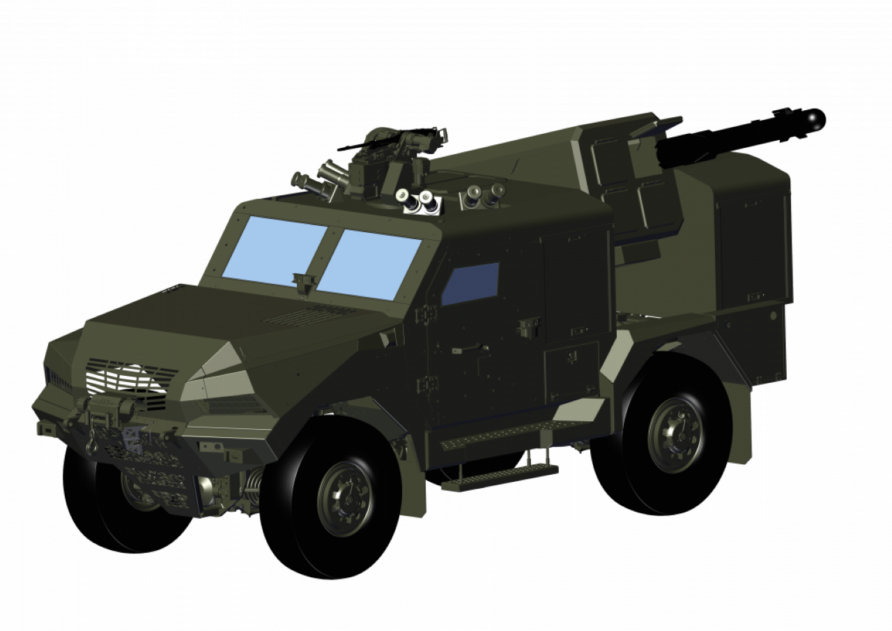
Ergonomics and Logistics are Important as Well
A 50 kg missile is not an easy lift.
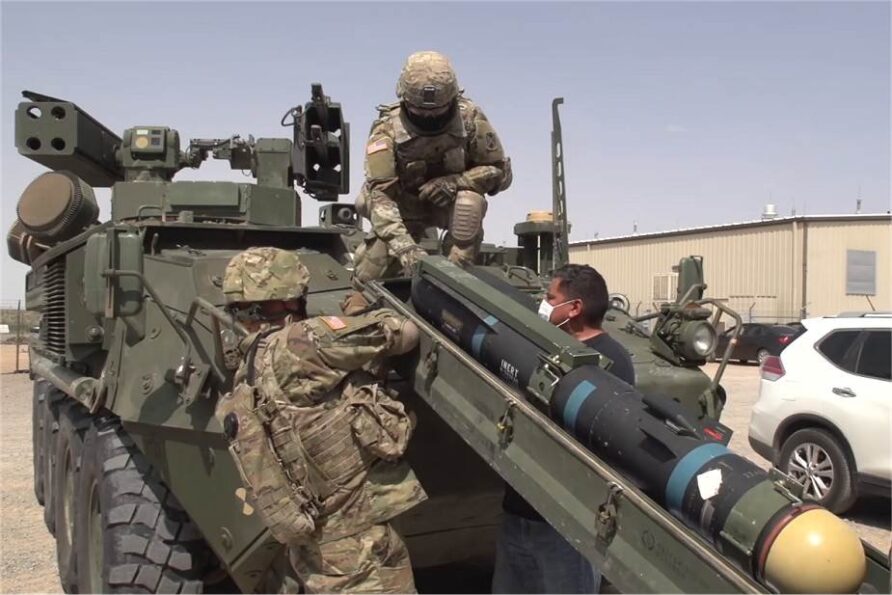
This is the Moog Reconfigurable Integrated Weapon Platform (RIwP), Hellfire was subsequently removed from the programme due to concerns about how weapons would be safely reloaded.
Swingfire was 37 kg, but this was in another age and safety considerations are simply different today than they were then. No point complaining about it, the Army has to deal with the safety legislation environment it has.
As can be clearly seen from the Lockheed Martin JAGM Boxer image, they have integrated a hydraulic loader for what appears to be the JAGM Quad Launcher as a single unit. 4 missiles at a time in an integrated VLS is clearly impossible to complete manually.
The Brimstone illustrations show the launch assembly with an extensible loading arm for individual missiles. Giving way to the 2×4 launch box layout that is common to both HMT and Boxer, neither this nor the original 2×8 illustrations, show any information on how they will be reloaded, although I understand the preferred option is an MLRS-style integral lifting mechanism for a ‘pod’ of missiles at once.
The MBDA Boxer/Brimstone data sheet includes this
- Able to self-reload in action without the support of logistic equipment
RBSL were keen to emphasise that the model on display was a mock-up, not the finished article, but if it does come to a two-way competition between it and JAGM, both they and Lockheed Martin will need to mature the ergonomics and logistics of their prospective solutions.
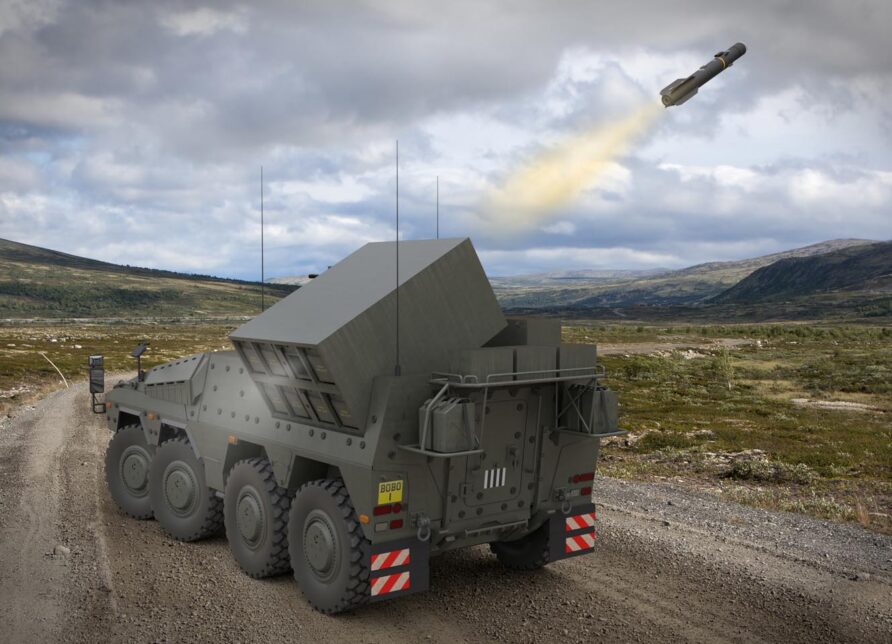
Interestingly, Moog was recently showcasing their RIwP with Brimstone and HVM, and a GPMG and M230 30 mm automatic cannon.
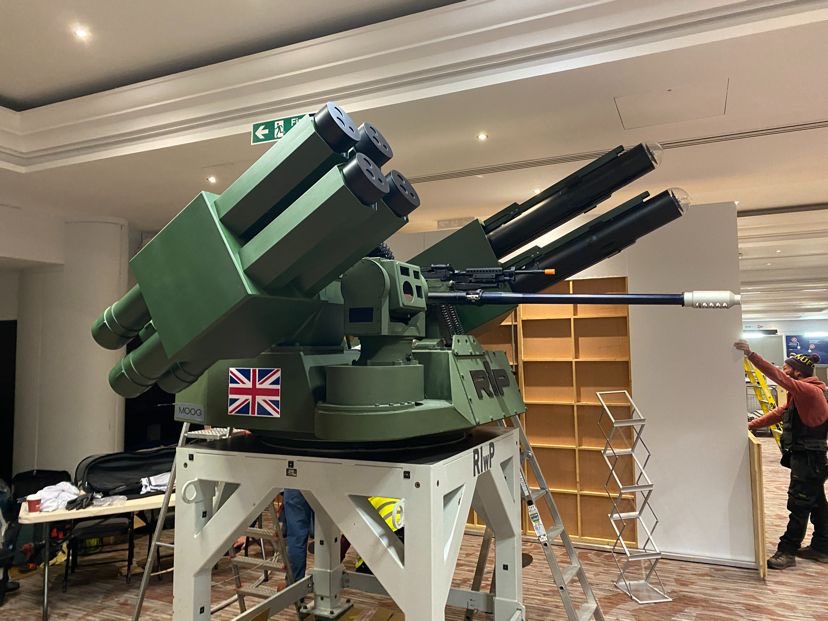
Sensors and Data Links
I haven’t really covered this much as there is not a great deal publicly available to discuss, but a key aspect of the Battle Group Organic Anti-Armour (BGOAA) is about locating and classifying targets and communicating that information to the weapon (or effector) and their launch point.
Locating targets could be done by Watchkeeper, Apache, Wildcat, or other airborne systems and UAS, or Ajax, Boxer, dismounted personnel, friendly forces, low-cost fixed sensors, and conventional armoured vehicles.
As with Land Precision Strike, any sensor should be able to pass information to any effector (or weapon) over a low probability of intercept communication and tactical data link.
This is much easier to say than do.
Turrets and Launch Mechanisms
One of the more interesting aspects of MCCO is the missile launch mechanism.
JAGM uses a VLS, Brimstone an elevating box launcher, neither uses a trainable launcher. It could be argued that neither needs it, and appearing more like a conventional APC-type vehicle improves survivability. This was actually one of the key aspects of Striker’s survivability, to look like a Spartan.
50 kg Hellfire-type missiles have been put on trainable launchers before.
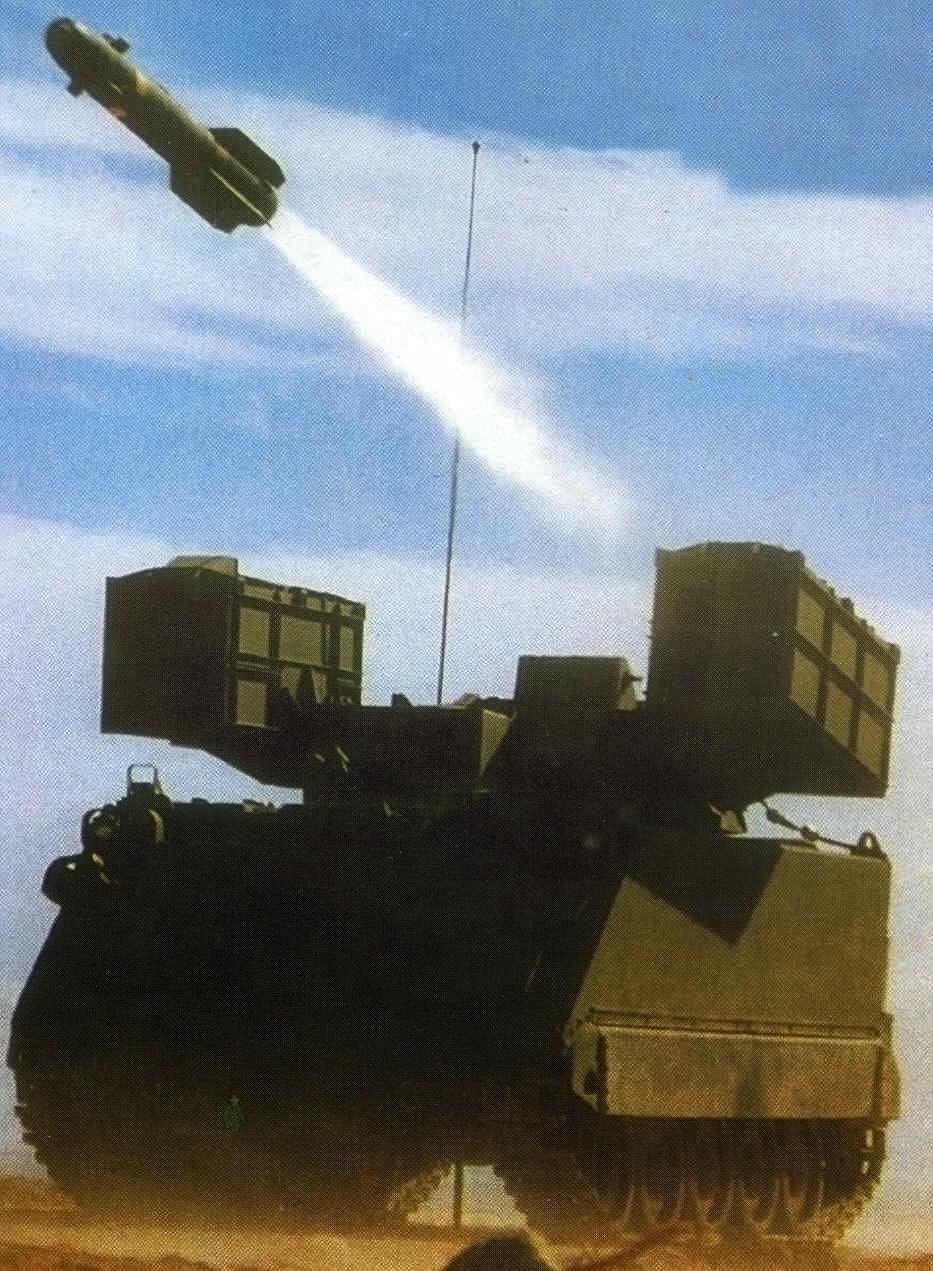
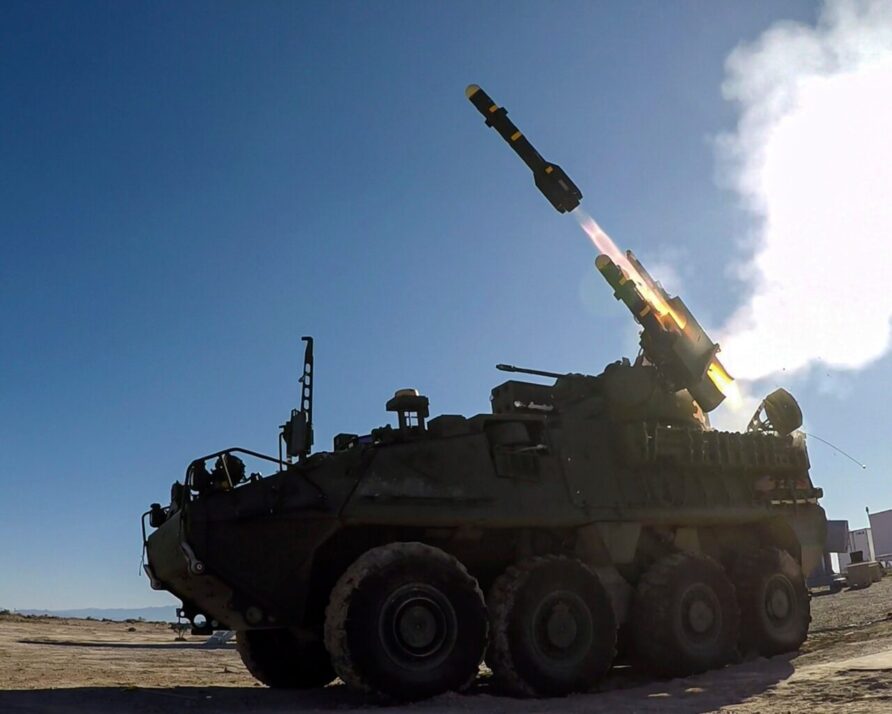
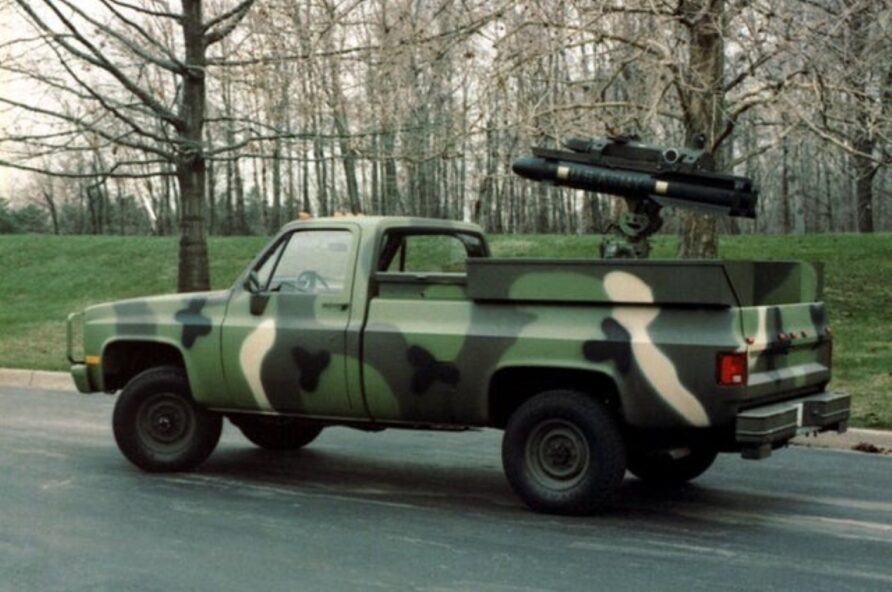
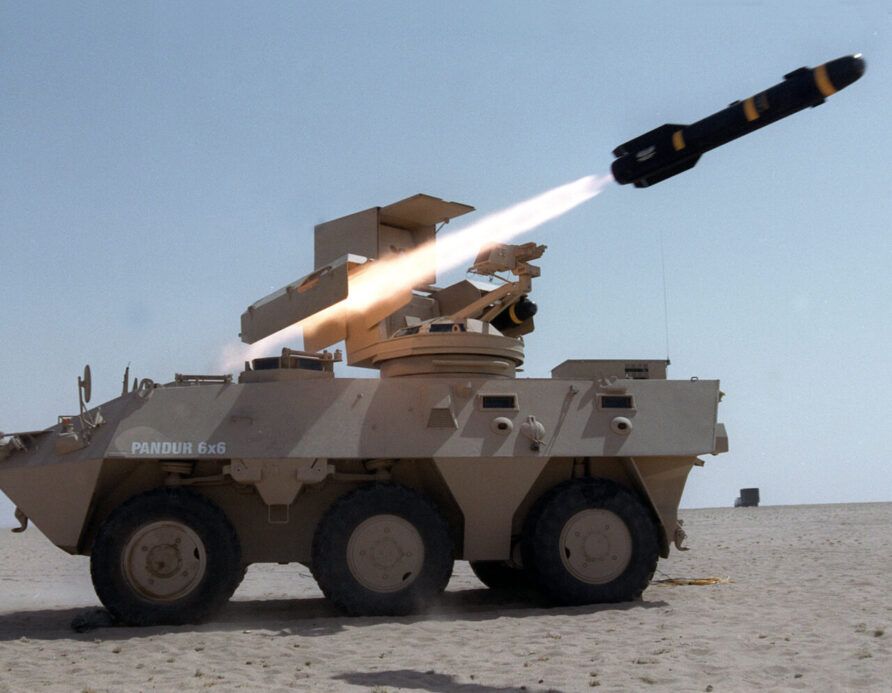
I wonder if the VLS and box launcher approach limits minimum engagement distances, Swingfire, on either Striker or FV438, had a minimum engagement range of 150m.
We can assume that those closer in engagements can be dealt with by one of the other components of Battle Group Organic Anti-Armour (BGOAA), the Close Combat Anti-Armour Weapon-Mounted (CCAAW-M), or Javelin replacement (which might be Javelin)
This brings me to this…
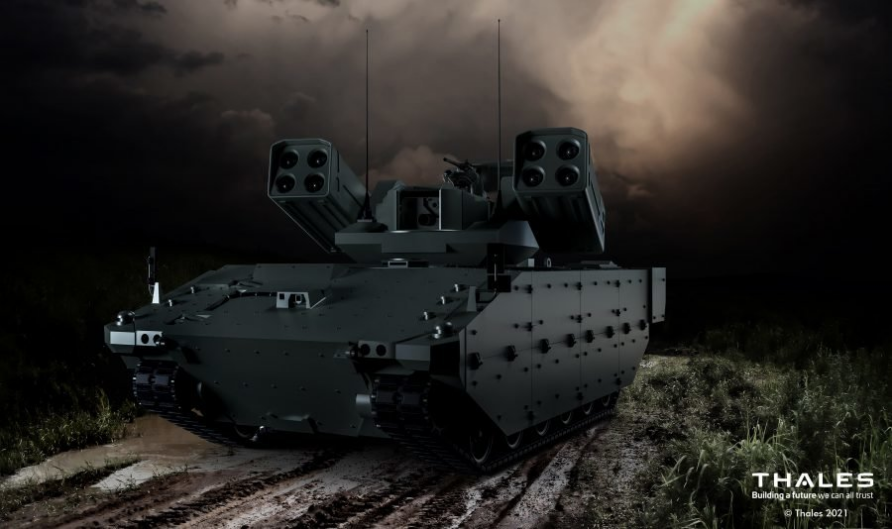
Part of the project work was a concept for a non-penetrating turret from Thales.
I thought initially that those missile containers looked reminiscent of PARS 3 (or TRIGAT), which given the history of replacing Swingfire would be rather ironic.
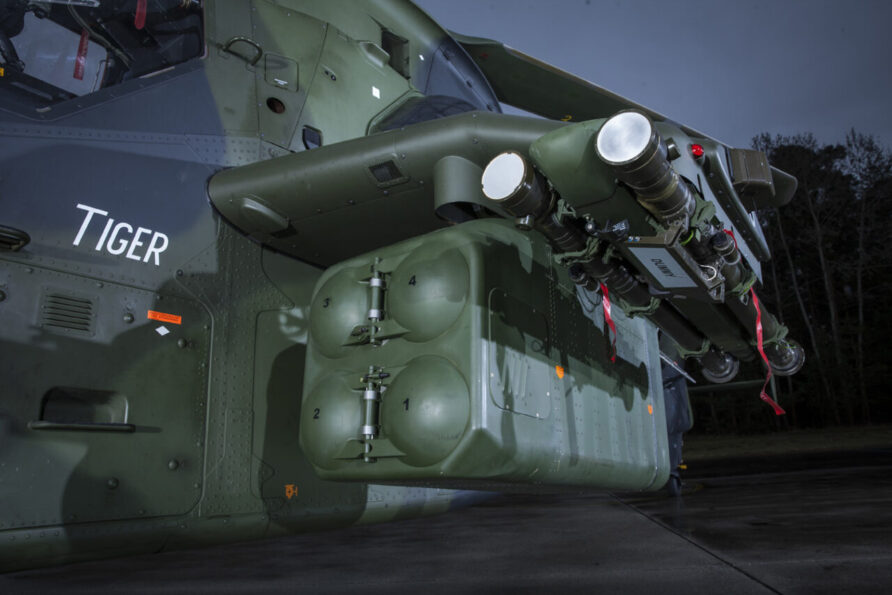
But perhaps not, maybe they are just a generic computer illustration, or maybe an MBDA Akeron
Summary and Final Thoughts
MCCO is an important requirement for the British Army as it develops towards 2030, despite the long and costly history of not replacing Striker and Swingfire.
There is an ever-present danger with the British Army, that they analyse the problem to death and never actually implement anything. In Ukraine, they successfully deployed Brimstone as an NLOS tank killer within a couple of months by the simple expedient of bolting a launch frame to the load bed of a light commercial vehicle.
If the British Army has been without this capability for nearly two decades, leaving things to 2030, with a business-as-usual leisurely pre-concept phase and multinational competition, is not a luxury it can afford.
Brimstone and the Supacat HMT under Project Wolfram will de-risk and inform the longer-term project, but there needs to be some pace injected. A palletised launcher that can be fitted to a MAN SV truck or Supacat Coyote seems the fastest way to deliver a minimum viable product, and it is heartening to see this in progress.
I have included Akeron, loitering munitions, Exactor, and even STRIX for completeness, and these could all form part of the mix, but the simple reality is the competition is between JAGM and Brimstone. As I am continually pained to point out, only Brimstone can be quickly launched into a grid square and told to go and kill tanks. All other solutions need very tight integration of sensors, operators and effectors, and at NLOS ranges, will need designation from something.
Inevitably, this reduces responsiveness and increases development time.
Brimstone is available now, it is being made in the UK presently, it is in service now and will be in service with the RAF for many years, it is clearly the low-risk and most capable solution.
What exactly are we waiting for?
Read more (Affiliate Link)




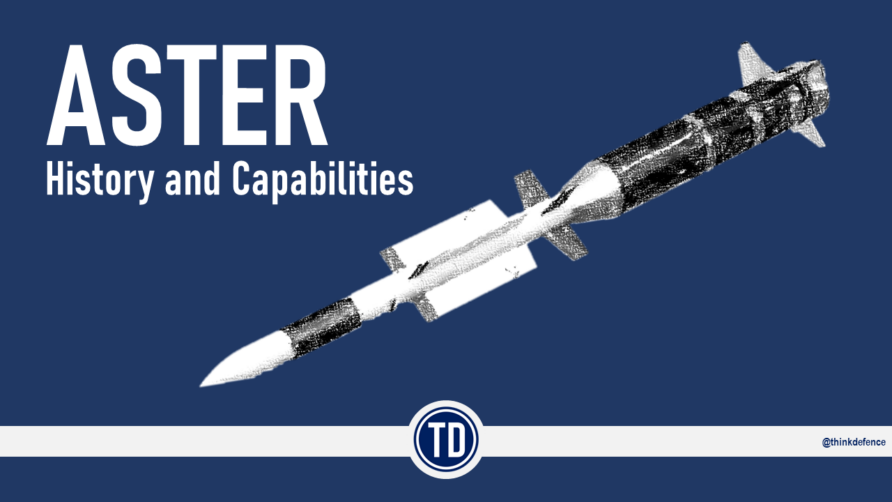
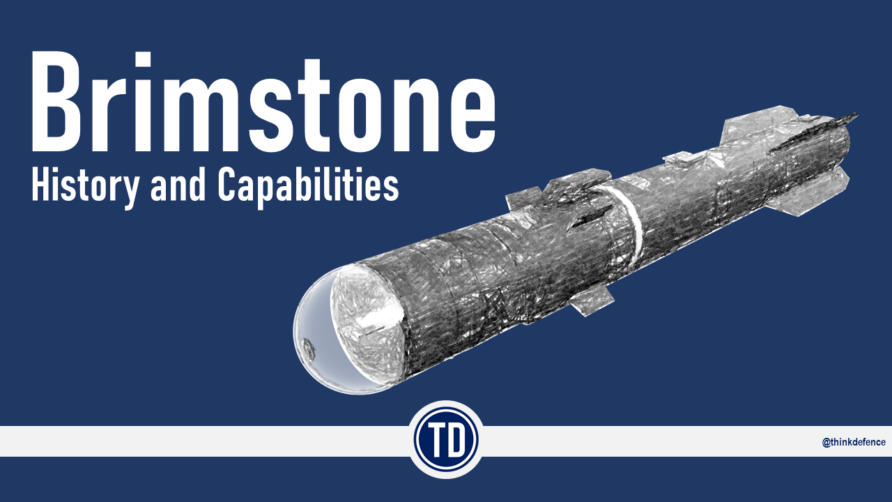
Let’s save time and summarise the next ten years – billions will be spent developing a disastrous design and we will end up buying what we should have bought in the first place?
I think the transverse rather than ‘for and aft’ box launcher on a Boxer is a bit odd, but presume it is quite well protected given its size, and yet it presents the tail end of each launcher / missile as a big area for small arms / shrapnel damage. I can, however see that it might make the reload easier.
You have to question the thinking behind the whole acquisition competition sometimes though, no? Brimstone 3, a “British to its boot straps” system, already selected for a similar role by Poland. Why are we not just figuring out the details of the launch vehicles at this point – Boxer, Ajax and even Supacat Coyote – boom, done.
Just a note…
"TRIGAT-LR would also be used as a helicopter-launched weapon, at the time, envisaged to be the Eurocopter Tiger for all the TRIGAT nations, France, Germany and the UK."
This was not the Eurocopter Tiger. LAH was the Tonal, a proposed development of the A129 Mangusta, very similar in concept to the RAH-66 Comanche.
Thanks DN, will have a look and update
Jed, I agree, we are going to analyse the problem to death and then collapse under our own weight, fielding nothing
Seems a no-brainer. We have a home-grown MOTS option already in-service that's doing exactly the mission we want it to do, against the target set we want to defeat, in Ukraine right now. Developed and delivered in what, 1 month? Plus the other country most worried about Russian tanks – Poland – has also selected it.
So yeah, what are we waiting for? Just get it onto a vehicle (any vehicle really) and off you go. Don't spend years specifying the thing upfront to the Nth degree, just get a basically functional system into service now and then iterate as needs be based on practical experience.
With no certainty when Ajax will achieve FOC and reported delays in Boxer production because of supply chain problems, it might make sense to use Supacat Coyote as the initial platform. It is the most British of the vehicles, easily the cheapest and the most mobile. If an under armour version is thought necessary, then either Ajax or Boxer could be adapted in due course.
My biggest concern is when reading between the lines…
Can anyone explain why we are having JAGM on Apache E? There has to be a technical or financial reason. The only reason I can come up with is that the economies of scale of US production of a Brimstone replacement (JAGM). If we are also getting a "kickback" on each sale of JAGM then all the better.
If the reason is political then we need to divorce politics from military procurement and national engineering – because it is killing us as a nation.
If a "follow me" UGV is not the answer because someone decides the vehicle may as well carry the fire-control observer then I'd go one step further and suggest that the overwatch asset should carry the FO and [more importantly] the UAV and associated control system.
Next, however much I like Brimstone, I'm not sure 16km is enough. It MUST outrange guided artillery as one of the armoured units it should be able to kill is the SPG or GMLRS.
Simply put the 10km specification is too old.
I think that one should be careful trying to do too many things with one system. If a launcher vehicle is also the observer then you start adding cost and limiting flexibility. A separate launcher and observer means that they can be in considerably different places and each can be smaller.
Likewise demanding 100km range, to perform counter-battery fire, from a battalion or company asset adds cost and complexity into something that you want to be cheap and focussed. Increased range always means increased flight time, so if you station your support assets further away the response time is similarly increased. I think it's preferable to have artillery and air assets on hand for counter-battery while local support uses something a little smaller and handier.
Then you have to consider deconflicting airspace and targeting and all the nuisance things that longer range weapons require.
Part of our procurement problems seems to stem from demanding the exquisite solution on the basis of "what if" when perhaps we should get the basic capability then develop it from there.
The Boxer options for Mounted Close Combat Overwatch could be a modified Boxer RCH 155 Variant utilising the rotating rear weapon stations which I believe is supplied by MOOG, with a Brimstone Pod attached giving it 360 degree firing capability and potentially a 12 Missile pod, you could then utilising the MRLS reloading and swap out pod system. 2 Man crew in a protected cab with relevant communication equipment and base platform that could be updated to receive the fire request from any sensor and deliver the effect on target and in a timely manner also this then allows the vehicle to be positioned in any direction and not always facing the enemy as the current proposal seem to require. it would look like a normal boxer and therefore would not be a primary target for an enemy force and you could use the same tactics as MRLS with fire and forget, move to a reloading point, reload and be back providing MCCO for the BCT, you could then have 2/4 vehicles providing this capability and could potentially be Artillery crewed as they know the MRLS and Boxer RCH155 doctrine better than the Infantry.
Hi James, will update this one soon!
Wikipedia has Swingfire mass as 27Kg not as you state twice as 37Kg. I remember loading them into a striker in the early 80's as being about 60Lb each, which seems about right. I could do it myself one at a time but it was hard on my back.
Thanks Mark, will double check and update
'Although not a completely comparable missile (being more akin to Javelin), the Griffin wedge launcher is remarkably similar to the 4-round Swingfire pallet launcher shown above on a Land Rover.' Photo?
i would like see:
akaran mmp replace javelin as portable atgw infantry + vehicles (nlos) link by orbiter 4 (replace watchkeeper) or other uav or other infantry use laser designation to reduce infantry risk spot.
hero-120 – loitering weapon (scout & destroy in long range) even recovered if no target to hit.
brimstone for atgw overwatch fast reaction anti-tank and apache 64-e, protector